Lessons Learned from a Boy with Autism







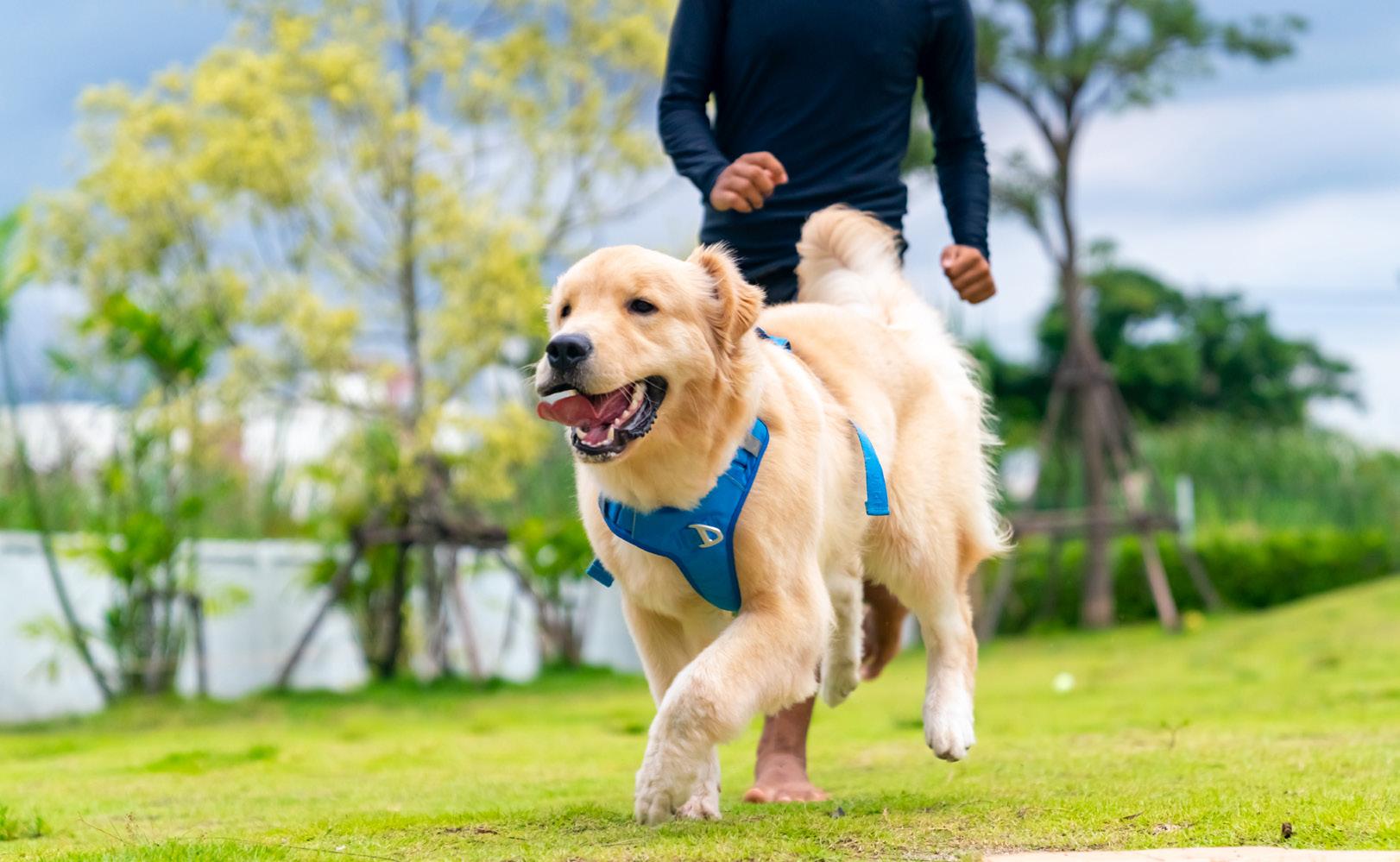
Playing with a dog for just 15 minutes can significantly reduce a person's stress, a new study reports.
Stressed students who interacted with a friendly dog reported less stress, had a reduced heart rate and had lower levels of the stress hormone cortisol in their saliva, researchers said in the journal PLOS One.
The experience also appears to be beneficial for dogs, researchers added. Fecal tests showed that canine cortisol levels were lower a week after hanging with a human.
“Even brief interactions with dogs can significantly reduce stress levels among university undergraduate students,” concluded the research team led by senior investigator Jaruwan Khonmee with Chiang Mai
University in Thailand.
For the study, researchers recruited six friendly dogs 3 to 6 years old to interact with college students. They included five chihuahuas raised by veterinarians and a Shetland sheepdog raised by a psychologist.
None of the dogs were certified for therapy work, researchers noted. This was the first time they'd participated in any sort of canine-assisted intervention, and they participated without the presence of their owner.
In the main library of Chaing Mai University, 122 students completed a stress assessment questionnaire, had their blood pressure and pulse taken, and provided a saliva sample for cortisol testing.
They then were given 15 minutes to play with a dog after being told the pooch's name, personality traits
and preferred interactions.
The students could do whatever they wanted — look at the dog, pet it, give treats, hug it, play with it.
Afterward, they went through another round of tests to assess their stress levels.
The dogs provided fecal and saliva samples before and after their time with students, to see whether the play benefited them as well.
Students showed self-reported and physical improvements in stress following their 15 minutes with a dog, results show.
“Compared to immediately before, students' self-reported stress levels decreased by 33.5% after interacting with the dog,” researchers reported.
The students also had improvements in their pulse rate and cortisol
levels, researchers noted.
There were no changes in salivary cortisol in the dogs on the day of play, but their fecal cortisol levels were lower a week after they spent time with the students, researchers said.
“Overall, these findings contribute to our understanding of the beneficial impact of human-dog interactions on human stress levels and highlight the importance of addressing stress in both humans and animals during targeted interventions,” researchers concluded.
“In contexts where certified dogs and handlers are not readily available, non certified dogs could still offer mental health benefits,” the team added.
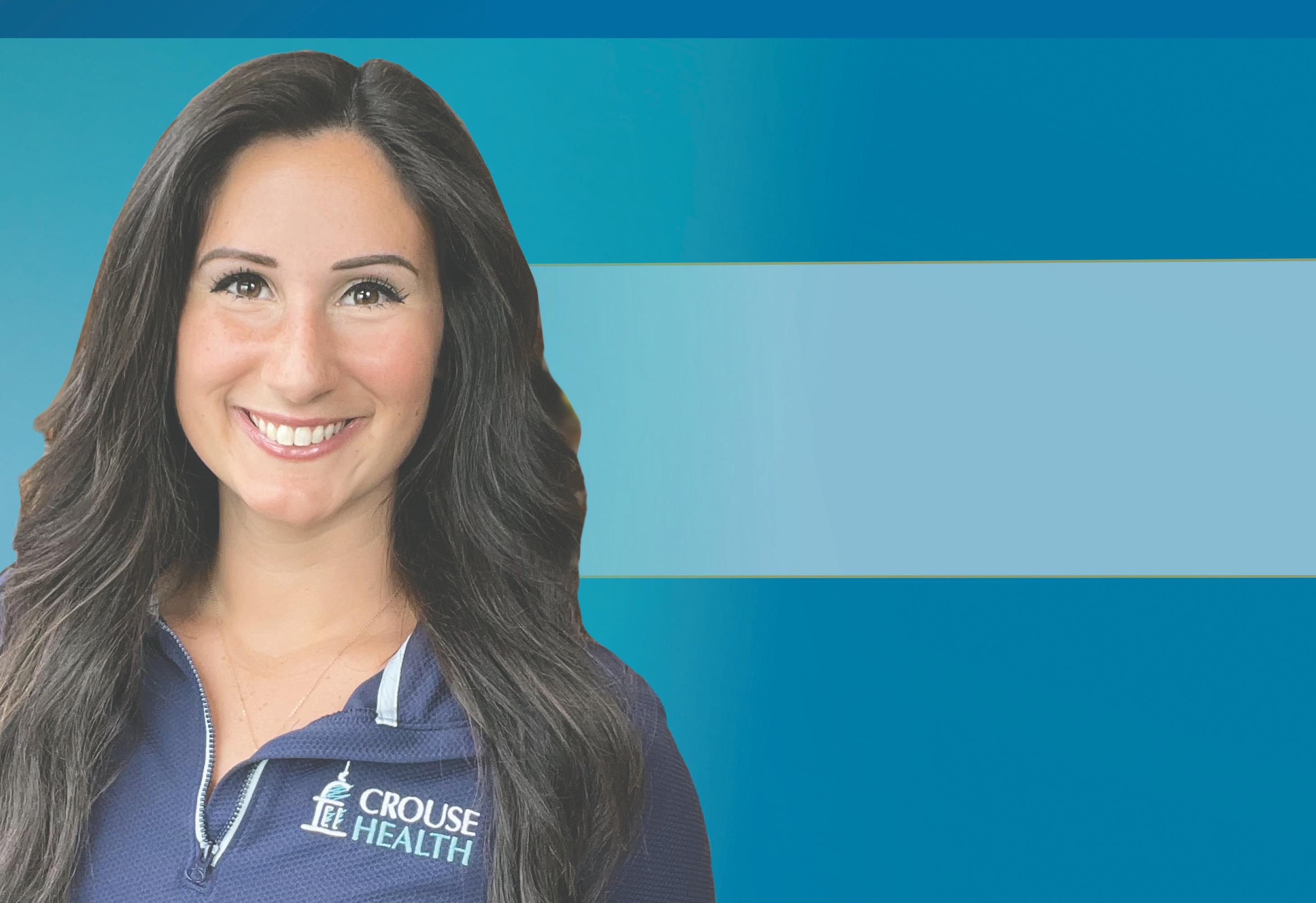


olks facing surgery on a Friday may want to consider rescheduling if they can based on findings from a new study.
People who undergo surgery just before the weekend have a significantly increased risk of death and complications, researchers reported March 4 in JAMA Network Open.
This “weekend effect” occurred across 25 common procedures representing multiple surgical specialties, researchers said.
"Patients who underwent surgery immediately preceding the weekend had a significantly increased risk of complications, readmissions and mortality compared with those treated after the weekend," a team led by senior investigator, physician Raj Satkunasivam of Houston Methodist Hospital in Texas, concluded.
"It is important for health care systems to assess how this phenomenon may impact their practices to ensure that patients receive excellent care irrespective of the day," researchers added.
Hospitals and health care systems tend to operate with skeleton crews during the weekend, leading to concerns that patients are more likely to receive worse care on Saturday and Sunday, researchers said in background notes. This is commonly called the "weekend effect."
This weekend effect might also apply to people undergoing surgery immediately before the weekend, who will be in the hospital recuperating after their procedure, researchers explained.
To investigate this, researchers analyzed data on nearly 430,000 patients who underwent surgery in Ontario, Canada, between 2007 and 2019.
Results showed that people who underwent surgery prior to the weekend had a higher risk of death at 30 days (9% increase), 90 days (10%) and one year (12%) compared to surgeries performed after the weekend.


Pre-weekend surgical patients also fared worse on a composite score combining death, complications and need for rehospitalization, with a 5% increased risk at 30 days and one year following surgery.
In addition to reduced personnel, there are other reasons why hospitals might provide worse care close to the weekend, researchers said.
More junior surgeons with fewer years of experience operate on Friday compared with Monday, and doctors working the weekend have less access to more senior colleagues and specialists, researchers said.
"Furthermore, weekend teams may be less familiar with the patients than the weekday team previously managing care," researchers noted.
Doctors also might have less access to tests and scans that could better help guide their treatment of patients, researchers added.
"Further study is needed to understand differences in care that may underpin these observations and ensure that patients receive high-quality care regardless of the day of the week," researchers concluded.
In Good Health is published 12 times a year by Local News, Inc. © 2025 by Local News, Inc. All rights reserved. 4 Riverside Drive, # 251, Utica, NY 13502 Phone: 315-749-7070 • Email: IGHmohawkvalley@gmail.com A monthly newspaper published by Local News, Inc. 20,000 copies distributed. To request
Editor & Publisher: Wagner Dotto • Associate Editor: Stefan Yablonski
Contributing Writers: Barbara Pierce, Deb Dittner, Gwenn Voelckers, David Podos, Deborah Jeanne Sergeant, Anne Palumbo, Jolene Cleaver, Eva Briggs (MD)
Advertising: Amy Gagliano: 315-402-3370 • Email: amyIGHmv@gmail.com
Layout & Design: Angel Campos-Toro • Office Manager: Allison Lockwood
recommendations of









By George W. Chapman

Lacking an organized approach to healthcare delivery in the U.S., we experience the highest cost per capita in the world and rank 40th in overall mortality. Now, our once formidable "front line" of primary care providers is battle weary and in retreat.
Thanks to the lack of any planning at the national level, coupled with decades of chronic underinvestment, providers are leaving the front line of primary care, favoring better resources (pay) and lifestyle (time) available in non primary specialties.
Fewer primary care providers (be they MD, PA, NP) results in longer wait times for appointments across all specialties; decreased access, especially in rural areas, and higher costs due to increased use of specialists and overwhelmed emergency rooms.
Of all the things that need fixing in healthcare, price transparency is way down on the list. Way, way down. Trump recently signed an executive order reinforcing the already existing rules on price transparency that were promulgated in his first term. Briefly, the rule requires insurers to post what they agreed to pay hospitals for 300 or so procedures. Then, in turn, hospitals are to post their prices for those same procedures. For the 92% of us covered by insurance, price transparency is nice but is practically useless. Price transparency means everything if you’re without insurance or your plan doesn't cover a certain procedure. For the vast majority of us, calling hospitals to check on their price for an MRI or outpatient procedure or finding out what your insurance pays the hospital for the procedure can be a waste of your time. In just about every case, you will be directed by your provider to an MRI site, hospital or outpatient center where the provider has privileges. Going elsewhere will be considered out-of-network and you could end up paying 100%. Medical billing and payment is very complicated. If we had a universal healthcare system, calling around for the best price would be totally unnecessary.
Consequently, premiums will rise across the board.
In 2022, primary care spending was only 5% of all healthcare costs. The number of primary care providers dropped from 106 per 100,000 people in 2022 to 104 per 100,000 in 2023. The trend is well established. Medical students are gravitating away from primary care (FP, Peds, OB-GYN) and toward specialties. Efforts by Medicare to "level the playing field" between primary care docs and specialists has been slow and inadequate. The best bet for a fledgling primary care resident is to avoid the economic and mental hassles of private practice and seek employment with a large hospital-centric healthcare system. And it's totally understandable. However, the trend toward the security of employ-
This is virtually the wild west of billing. If you have had to use an ambulance (and God bless our first responders who often keep you alive on the way to the ER) you probably owe more out of pocket for the ambulance ride than out of pocket for the hospital and physician services combined. Insurance coverage is all over the map (and calling ahead of your emergency for a price check is clearly not an option!) Most likely, you will end up negotiating after the bill arrives. Surprise billing regulations do not cover ambulances. These regs typically apply to bills from physicians who, unbeknownst to you, do not participate in your insurance plan even though the hospital ER does. In most cases, the hospital now pays the difference between what your plan would have paid and what the non-par doc charges. You are held harmless. Both volunteer and for-profit ambulance companies operate outside the competitive market place. Let's face it. They can because you are going to take whatever ambulance arrives first. That being said, 80% of ground ambulance rides are out of network. A case in California recently got a lot of notoriety. A jogger was struck by a car and taken
delay has raised concerns that unless a decision is made sooner than later we won't have enough flu vax in the fall. Drug manufacturers face tight deadlines every year and this is exacerbating the problem. As of this writing in early March, 910,000 people have been hospitalized with the flu. 19,000 adults and 90 children have died from flu complications.
ment unintentionally exacerbates the shortage of providers because (ask any doc in private practice) employed docs work fewer hours than their private practice counterparts. PCPs are the quarterbacks of healthcare. Without their involvement and direction, we will end up meandering our convoluted, confusing and disjointed "non-system" alone. Virtual visits and even AI may provide some relief and most patients who have experienced virtual care are OK with it. (Probably had no choice?) Without an adequate supply of MDs, PAs and NPs in primary care, patient frustration and premiums will invariably increase. If we are to fix healthcare, it has to start with the foundation of primary care.
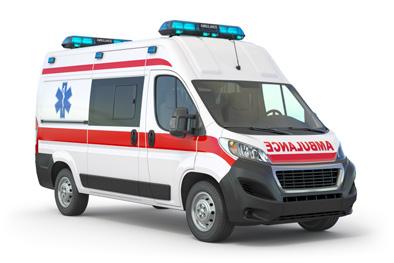
via ambulance to a nearby ER just a few miles away. He was treated and released. The ambulance bill (again, God bless our first responders) was $13,000. After months of phone calls, the Blues [Blue Cross Blue Shield] acquiesced and paid $10,000 leaving the jogger with a $3,000 bill. After another few months of calls, this time with the commercial ambulance (and the press) the company waived the $3,000. The Center for Consumer Information and Insurance Oversight was involved. They were involved in more than 650,000 similar billing disputes in 2023. Unfortunately, 15% of their staff has been eliminated by DOGE, the Department of Government Efficiency. This is just another example of what could be fixed ahead of price transparency.
To put it mildly, things have been rather chaotic at CDC/FDA/ NIH/CMS since the election. As I'm writing this column, here it is where things stand in early March. The FDA abruptly cancelled a March 13 vaccine advisory committee meeting. The meeting is attended by experts — including drug designers, scientists, manufacturing, biologists and other healthcare stakeholders — to recommend the strains for next season's flu vaccine. The unexpected
We spend about $5 trillion annually on healthcare or just over $14,000 per capita. It's by far more than any other country. It breaks down as the following: hospitals, 31%; other personal healthcare, 16%; physicians, 15%; drugs, 9%; clinical services. 5%; nursing homes. 4%; home care. 3%. The remaining 17% goes toward net cost of health insurance (basically overhead), investments and public health activities. For hospitals, revenue comes from three main payers: commercial insurance, 40%; Medicare, 30%; and Medicaid, 20%. The remaining 10% is self-pay, grants, investments, donations. Operating margins are razor thin for the majority of hospitals. The cuts to Medicaid will have a disproportionate impact on rural hospitals.
No one is spared from the recent purge of federal employees and our veterans are no exception. They comprise 30% of the VA workforce. The VA has been ordered to cut 80,000 jobs (nurses included) or 15% of the workforce. The goal is to return to the 2019 total of 400,000 employees. There are 170 VA hospitals and 1,380 outpatient healthcare facilities across the country making it our largest healthcare system. The VA cares for 15.8 million vets.

Congress has approved a federal budget that slashes $880 billion in Medicaid funding to indigent individuals, hospitals and nursing homes. Consequently, if states are to continue the same level of services they must raise taxes. If the feds impose a suggested dollar per capita cap, the states will have to come up with between $700 billion and $1.1 trillion over the next 10 years. The states that would be most impacted are Arkansas, Kentucky, Louisiana, Mississippi, New Mexico and West Virginia. All these states are "red" except for New Mexico. In addition to a state tax increase, hospitals will most likely negotiate higher rates from commercial insurers to offset losses in Medicaid funding and the increase in uninsured patients seeking care in their clinics and emergency rooms.
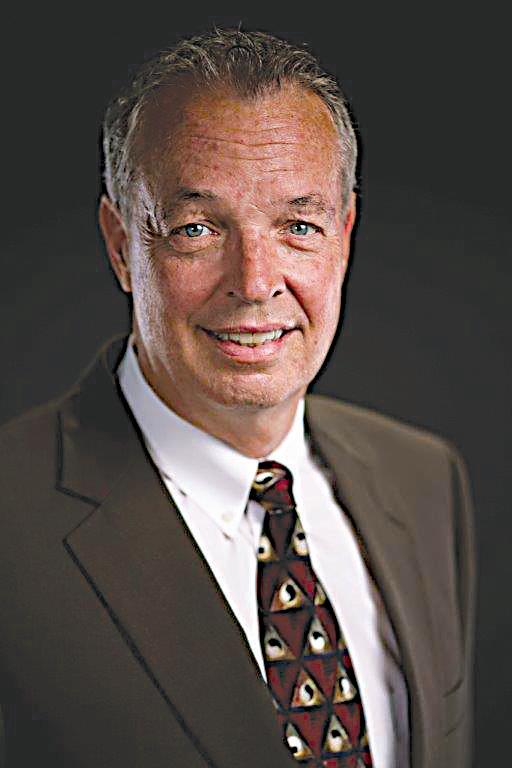
George W. Chapman is a healthcare business consultant who works exclusively with physicians, hospitals and healthcare organizations. He operates GW Chapman Consulting based in Syracuse.

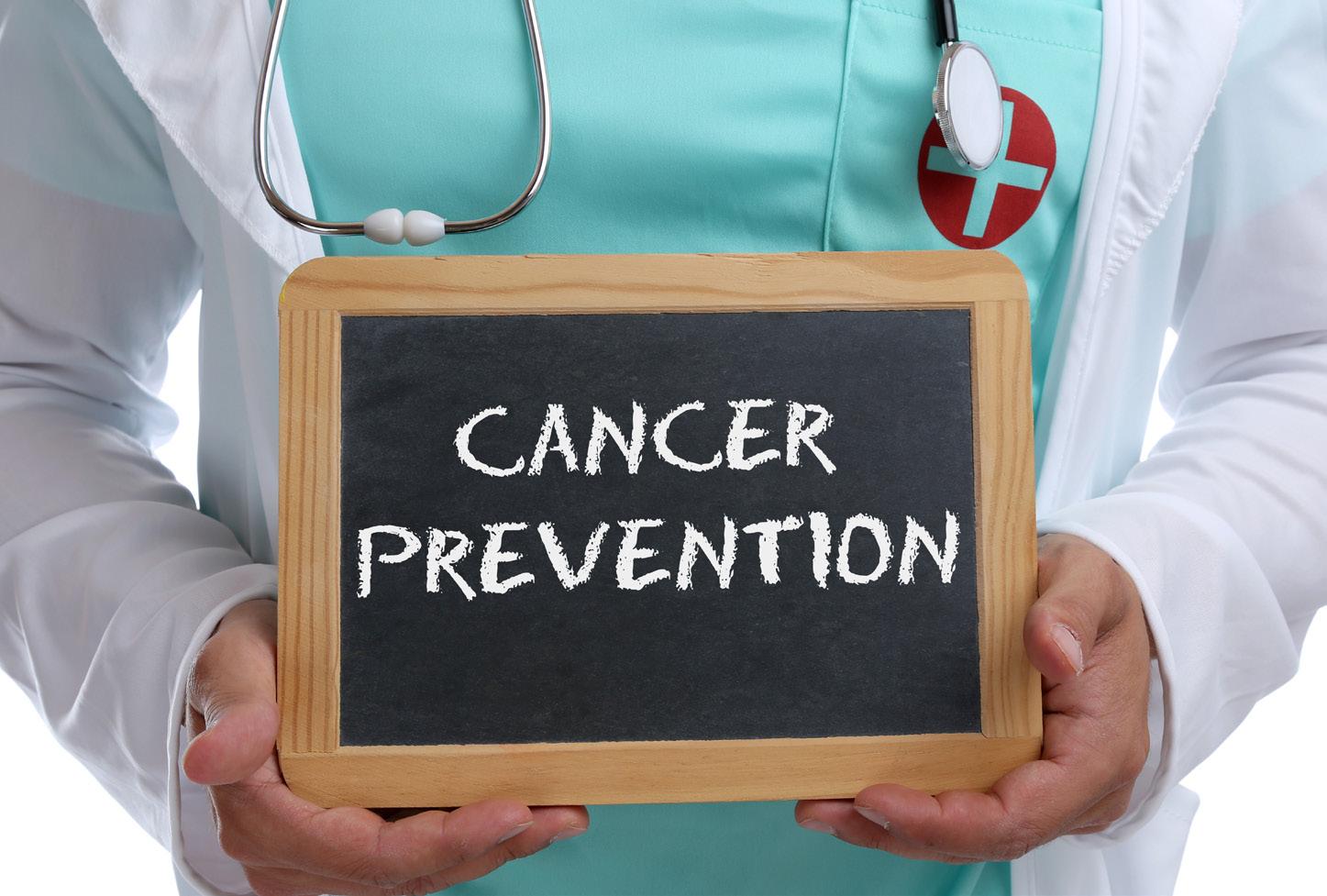
Preventive screenings for cancer declined during the pandemic, with lockdowns, social distancing and COVID-19 surges keeping many from needed mammograms and colonoscopies.



But breast and colon cancer screening numbers have since rebounded and have even surpassed pre pandemic screening estimates, a new American Cancer Society study has found.
Thirty-one million people, or 12% of the U.S. adult population, borrowed $74 million last year to help pay medical costs for themselves or a family member, according to the results of a survey conducted by West Health and Gallup.
The online West Health-Gallup Healthcare Survey included 3,583 U.S. adults and was conducted from Nov. 11 to 18, 2024.
The survey revealed that 18% of young adults aged 18 to 29 years needed to borrow money to pay health care costs. Adults aged 30 to 49 years reported similar rates. However, only 9 and 2% of Americans aged 50 to 64 and 65 years and older, respectively, said they needed to borrow money to help with medical costs.
Twenty percent of women younger than 50 years reported borrowing money to pay for health care compared with 14% of men younger than 50 years. Similarly, women aged 50 to 64 years were twice as likely as men in the same age bracket to report borrowing money. Although men were less likely than women
“These findings are mostly encouraging as the pandemic resulted in widespread disruptions in cancer screening in the U.S.,” lead researcher Jessica Star, an associate scientist of cancer risk factors and screening surveillance research at the American Cancer Society, said in a news release.
Unfortunately, the good news doesn't extend to cervical cancer screenings, which remain below pre pandemic levels, researchers reported March 5 in the Journal of the American Medical Association.
“The continued decline in cervical cancer screening is troubling as diagnoses of cervical cancers at an early stage, when they are more treatable, also decreased during the pandemic,” Star said. “Without returns to cervical cancer screening, prevention and early-stage diagnoses may continue to drop and put more lives at risk.”
For the study, researchers analyzed responses to the National Health Interview Survey, an annual poll conducted by the U.S. Centers for Disease Control and Prevention (CDC).
The team compared cancer screening rates in 2019, before the pandemic, to those in 2021 during the pandemic and in 2023 after the end
to borrow money to pay for health care, they tended to borrow more (51 versus 36 percent borrowing $1,000 or more).
Black and Hispanic adults were each more likely to report having borrowed money than their White counterparts (23 and 16 percent, respectively, versus 9 percent). When broken down by age, the disparities were particularly noticeable among adults younger than 50 years (29 percent versus 19 and 14 percent for Black adults versus Hispanic and white adults, respectively).
Fifty-eight percent of Americans said they are concerned that a major health event could lead to personal medical debt, including 28 percent who reported being "very concerned."
"The findings suggest that stronger public policy is needed to address the impacts of high-priced health care; without such changes, millions more may accumulate debt or be forced to make painful tradeoffs about seeking health care," according to a news release from Gallup.
of the global health crisis.
Results show that breast and colon cancer screenings in 2023 exceeded 2019 levels by 7% and 12% respectively, due to sharp increases toward the end of the pandemic.
Meanwhile, cervical cancer screening in 2023 remained 14% below 2019 levels, with no change between 2021 and 2023, researchers found.
“The persistent decline in cervical cancer screening may in part reflect longer-term declines in patient knowledge and clinicians recommending the test,” Star said. “It's imperative that we continue to advocate for returns to cervical cancer screening and efforts must also address the widening disparities in all cancer screenings by socioeconomic status.”
In addition, the rebound in screening for breast and colon cancers occurred mainly among people who make more money, have higher education and are either privately insured or Medicare recipients, researchers found.
“Health systems and health care professionals could play a major role by improving screening communications and providing patient navigators to help address structural and cost barriers,” researchers concluded in the study.





By Gwenn Voelckers

remember the morning of Sept. 11, 2001, as if it were yesterday.
I was at work at the time, when we were summoned into the conference room. That’s where my colleagues and I watched TV in uncomprehending horror as the first tower collapsed and then the second.
We sat there together in stunned silence, until several coworkers abruptly stood up and ran to their offices to make phone calls to check on loved ones in New York City.
Moments later, we were dismissed for the day.
Shaken to the core, we gathered our things, slowly dispersed and went our separate ways.
I returned home in the middle of the day to a quiet house. Alone.
I made a few phone calls, but my friends and family had no words. Nor did I. We were all in shock. So, I turned on the TV and clung to the coverage as if it were a life raft. Commentators were trying to make sense of the unthinkable attack. Public figures were asking for prayers and offering reassurance.
It was all I had.
I remember longing for someone to sit beside me, to help me process the enormity of what was happening, to reassure me that we were safe, that life would go on. But there was no one.
That was my first real taste of facing a crisis alone.
And now, more than two decades later, I find myself — like so many others — struggling with those same emotions. Today, the enemy is not foreign terrorists but something that feels even closer to home.
At least half the country is grap-
pling with an overwhelming sense of fear and vulnerability under the current administration in Washington DC.
Democratic norms are being disregarded, trusted experts removed, legal, environmental and consumer protections dismantled. Mass firings and deportations occurring and the stock market is tumbling as I write this.
Most alarming is the strategic shift toward Russia, undermining longstanding alliances and jeopardizing Ukraine’s future.
Once again, I find myself longing for someone by my side during all this chaos, but over the years, I have learned that living alone does not have to mean helplessness.
There are ways to cope, to stay resilient and to find a path forward — even when the world feels like it’s unraveling.
Here are some of the strategies that have helped me and I hope they help you, too.
First and foremost, embrace self-compassion. These are extraordinary times and it is OK to feel overwhelmed. It is OK to take a moment to step back and acknowledge whatever feelings you are experiencing.
Ask yourself:
• Am I treating myself with the same kindness I would offer a friend going through a hard time?
• Am I allowing myself time to rest, recharge, meditate and pray?
• What small comforts can I give myself today — a warm drink, a cat nap, a walk outside or short drive
in the country? Listening to audio books is my healthy distraction.
How can I create moments of peace within my day, even amid the chaos?
2) Connect with
Living alone does not mean being alone. You do not have to endure hard times in isolation. Connection is a lifeline, and it is more important now than ever.
Ask yourself:
• Who are the people in my life that make me feel heard and supported?
• Can I reach out to a friend today, even if it’s just a quick text, email or phone call?
• Are there local or online communities where I can engage in meaningful conversations?
• How can I be a source of support for others, knowing that connection is a two-way street?
While I believe in staying informed, I also recognize the need to protect my sense of well-being. For me, too much exposure can be emotionally draining.
Ask yourself:
• Am I consuming news in a way that informs me or in a way that overwhelms me? More and more, I’ve found that reading the news causes me less anxiety than watching it. I can do without the breaking news banners, sensationalized stories and traumatic imagery.
• Can I set designated times for news updates?
• What are some trusted, balanced sources of information that won’t amplify my anxiety?
Feeling helpless is something I struggle with during challenging times like this, but doing something — no matter how small — can be empowering.
Ask yourself:
• What causes or organizations align with my values, and how can I support them?
• Can I volunteer, donate or advocate in ways that will make an impact?
program of the Robert Wood Johnson Foundation — included members from the Academy of Nutrition and Dietetics, the American Academy of Pediatric Dentistry, the American Academy of Pediatrics and the American Heart Association.
• How can I channel my frustration into constructive action? Writing this column serves this purpose. And I hope it motivates you and others to get involved.
• What practical steps can I take in my daily life to contribute to the change I wish to see?
5) Pursue Joyful Endeavors
Even in turbulent times, joy is not frivolous — it’s essential. Engaging in activities that bring you happiness can replenish your emotional reserves.
Ask yourself:
• What hobbies or creative pursuits bring me a sense of fulfillment?
• Can I set aside time to read, watch a movie or listen to music without guilt?
• How can I incorporate small moments of beauty into my day — a lit candle, fresh flowers, a beautifully wrapped package, a birdsong, a heartfelt thank you.
• What places or experiences make me feel at peace and how can I seek them out? You’ll often find me at the Lamberton Conservatory in Highland Park.
You Are Not Alone:
The truth is, these strategies can be applied to any crisis, whether it is a political upheaval, a personal loss or a medical emergency.
So, if you are living alone and struggling with uncertainty, know this: There are countless others who share your fears, your frustrations and your hopes for a better future. By reaching out, taking action and caring for yourself, you can ease the burden of solitude and cultivate a renewed sense of purpose and resilience.
Remember — you are not alone. We will find a way forward. And we will do it together.
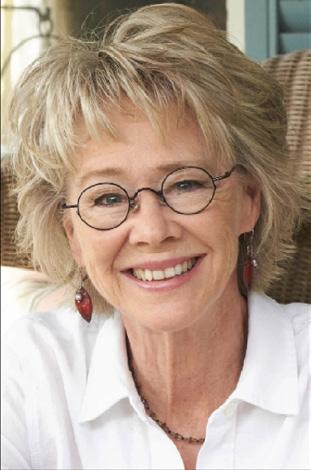
Gwenn Voelckers is the author of "Alone and Content," a collection of inspiring essays for those who live alone. She welcomes your comments about this column and topic suggestions for future columns at gvoelckers@ rochester.rr.com
The panel said 100% fruit or vegetable juice is acceptable but should be limited due to its high calorie content.
Panel suggests avoiding flavored and sweetened milk, soda, caffeinated drinks
G
ot milk? It turns out, plain cow's milk, water and a bit of veggie juice are still the best drink choices for kids and teens.
That's the consensus of experts
who recently issued healthy beverage recommendations for kids and teens aged 5 to 18.
The expert panel — convened by Healthy Eating Research, a national
Its recommendations follow a five-month review of scientific literature, according to The Washington Post.
Unsurprisingly, the panel said water should be “primary beverage for meeting hydration needs,” with the recommended daily intake ranging from 16 ounces to 88 ounces, depending on a child's age and sex.
Tap water, the panel wrote, is preferred because it's affordable, eco-friendly and often has fluoride added to prevent tooth decay.
Plain pasteurized milk — preferably low-fat or fat-free — was also recommended for its essential nutrients.
The panel also said plant-based milks, like almond or oat, lack key nutrients and should only replace dairy if medically necessary. It said flavored and sweetened milk should be avoided or limited.
Sugar-sweetened beverages, like sodas and sports drinks, “are not recommended as part of a healthy diet for children and adolescents,” the panel concluded.
Caffeinated drinks, which can disrupt sleep, mental health and heart health, are also not recommended.
“Choosing healthy beverages for children is just as important as choosing healthy foods,” Amy Reed, a pediatric dietitian and the Academy of Nutrition and Dietetics' spokeswoman, said in a news release.
By Barbara Pierce
Even those who usually don’t pay attention to politics may be experiencing secondhand stress from the constant exposure to political turmoil
No matter where you fall on the political spectrum, as Americans, we’re living through a unique moment in our nation’s history.
Political polarization in the U.S. is at the highest level ever measured. Increasing numbers of people from both parties are concerned about the rapid changes we’re facing.
Even those who usually don’t pay attention to politics may be experiencing secondhand stress from the constant exposure to political turmoil and arguments between individuals or groups. And the news and social media don’t help, making the entire matter seem impossible to avoid.
We’re social creatures. Clashes with others — friends, family members, co-workers and even strangers — cause us stress.
I know I’m feeling stress, distress, fear, anxiety and many more emotions.
Maybe you are, too.
We all know how harmful ongoing stress is to our bodies.
I’m writing this the first part of March; you’re reading it in April. Perhaps things are better. Perhaps the news won’t be causing so many of us a heavy dose of stress daily.
But perhaps we all need to learn ways to better get through these times. Here are some things I’m going to try:
1. Limit your news consumption. The 24-hour news coverage is designed to keep you on high alert, waiting for the next “big story” to be revealed. Don’t fall for that. If you feel you need to be aware of what’s going on, find one or two news sources that are fact-based and you trust to stay informed. But limit your time with them! You don’t have to know everything that’s happening right away. It’s OK to find out about news after it breaks. Pay attention to your mood while you’re watching. If you begin to feel anxious, agitated or angry, turn it off.
2. Take a social media break. Like the 24-hour news cycle, social media is designed to get a reaction from us, a strong reaction and mostly negative. Studies demonstrate that social media use is linked to increased feelings of stress, loneliness and depression. Limit your use of social media to once a day at most or take a break from it altogether. Choose to step away.
3. Getting outside more often. That’s a great way to reduce stress. Being in nature improves our mood as well as giving us exercise. Even a simple plant in the room or pictures of nature, can make you feel less anxious, angry and stressed. But it’s
Ablood test can help doctors detect ALS, or amyotrophic lateral sclerosis, and predict how the degenerative disease will progress in patients, a new study suggests.
People with ALS have three times higher blood levels of neurofilament light chain proteins, which are produced when nerve cells are injured or die, than people with other brain diseases, researchers reported Feb. 26 in the journal Neurology.
A blood test looking for neurofilament light chain proteins accurately identified ALS patients more than 80% of the time, researchers said.
The test also can help predict survival for people with ALS, results show.
Within a year, more than 40% with neurofilament light chain proteins below a certain set point were still alive. None with levels above that point remained alive.
“While more research needs to be done to confirm these findings,

better if you get out of that room and go out. Even as little as 10 minutes outside can improve our well-being. Nature gives us a sense that we are part of something greater than ourselves. It can get us out of our own heads. It has a stability that we do need.
4. Practice self-care. Simply, this means caring about your well-being, doing the things that make you feel good. This is different for each of us, but it may mean taking a bubble bath, lighting candles, getting a massage, doing a hobby, using a diffuser with calming scents, meditation or reading a good book.
5. Drink less caffeine. Too much caffeine causes anxiety for many and can interfere with your sleep. Keep caffeine under four to five cups a day. As for me, if I drink caffeine after noon, I can’t fall asleep at my usual 10 p.m.; caffeine lasts that long in my body.
6. Having a social support system is important. We do need each other. Be open to learning about other points of view; show compassion and understanding in your interactions with others. If the conversation be-
gins to make you uncomfortable, step away or change the subject.
7. Cuddle. Research shows that positive physical contact helps relieve stress. Positive physical contact may help release chemicals in our brain that lower our blood pressure and heart rate. High blood pressure and increased heart rate are physical symptoms of stress.
8. Spend time with a pet. Having a pet helps reduce stress and improves your mood. When you cuddle or touch your pet, your body releases a hormone linked to positive moods. A pet also keeps you active and provides companionship.
9. Lastly, remember the Serenity Prayer; it’s a useful summary of the research that’s been done on coping with hard times: “God, grant me the serenity to accept the things I cannot change, the courage to change the things I can, and the wisdom to know the difference.
We need the strength to change what can be changed. We also need the serenity, the ability, to accept what we cannot change. We need to remember to use both of these tactics.
having better information about prognosis is valuable for people with ALS and their families as well as the doctors who treat them,” senior researcher, physician Sylvain Lehmann, director of the University of Montpellier’s Institute for Neurosciences in France, said in a news release.
ALS, also known as Lou Gehrig’s disease, is a progressive disease that affects nerve cells in the brain and spinal cord. Nerves that signal and control muscles degenerate, causing patients to lose control of their movement.
For the study, researchers compared blood samples from 139 patients with ALS against 70 from patients with other similar brain disorders like lower motor neuron disease and primary lateral sclerosis.
The research team looked specifically at three potential types of blood markers: neurofilament light chain proteins, glial acidic proteins and phosphorylated tau 181.
Glial acidic proteins are released
when cells work to repair injury, and phosphorylated tau 181 is linked to the buildup of toxic amyloid proteins in the brain, a hallmark of Alzheimer’s disease.
“Having an effective biomarker can be highly valuable -- in addition to helping in making the diagnosis, it can help in predicting prognosis, evaluating what stage of the disease people are in, and tracking their
progress or their response to treatments,” Lehmann said.
Results showed that neurofilament light chain protein levels provide a much better means of detecting and tracking ALS than the other two measures.
The other two markers produced accurate results only about 50% of the time, researchers said.
By Barbara Pierce
“She lives an amazing life!” were the words that Mary Radel of The 21 Club of CNY used to introduce me to Gina Klepadlo, a 34-year-old resident of Rome with Down syndrome. Gina lives with her parents and is close to her two older brothers, their wives and children.
We asked Gina and her mother, Carol, to describe what life is like for Gina.
Q: I understand you work as a teacher’s aide. What is your job like?
A: I help the kids; help them with math or reading or doing activities. I work with third graders.
Carol added that Gina works as a volunteer in the Rome School District. She’s been there seven years.
Q: What do you like best about your job?
A: I love the kids!
Q: What do you like least about this job?
A: Nothing! There’s
nothing I don’t like. I like it all!
Q: What other work have you done?
A: I worked for seven years at the Wyndham Hotel, where I made beds, cleaned up rooms and the common area. I like working with kids better.

Carol added that, after high school, Gina attended CollegeWorks, a two-year program with the goal of connecting participants with jobs. Through this program, Gina was connected with the job at the Wyndham. She also learned to take the bus to her classes and from her classes to her job.
Q: What do you like to do when you’re not working?
A: I’m in Special Olympics. I do bocce, golf, swimming, bowling. I am an athlete! I take classes and practice at the YMCA — at the Y, I do Zumba, swimming and yoga. I have lot of friends. We go to the movies, hang out, play video games and basketball.
Carol added that, when Gina participated in
Special Olympics USA in 2022, it was a highlight of her life. She traveled to Orlando, Florida, to participate where she won gold and silver medals.
Also, Gina participants in The Arc, Oneida-Lewis’ StageWorks program that puts on community theater productions. “It’s a wonderful experience for her,” Carol added.
Q: If you could use just one word to describe your life, what would word that be?
A: “Wonderful!” Gina replied, after thinking for a few minutes. “Awesome!” Carol added. “She leads a very good life!”
Carol also wanted us to know that Gina participates in social events with The 21 Club of CNY.
It’s called The 21 Club, because trisomy 21 is another word for Down syndrome, a genetic disorder caused by an extra copy of chromosome 21.
The 21 Club President Mary Radel explained: “We’d like every family who loves someone with Down syndrome to know that you don’t have to be alone on this journey. We hold social events so families have the opportunity to connect with each other while having fun.”
Carol added that, in addition to social activities, The 21 Club does so much for people with Down syndrome. They help new parents with a Down syndrome baby; they offer groups for mothers and groups for fathers.
Q: We asked Carol: What would you like people to know about Down syndrome?
A: While people are more aware of what Down syndrome is all about, more inclusion is still a goal. Also, I’d like people to know that those with Down syndrome can accomplish so much; they can do so many things. Like Gina — she volunteers, has friends, enjoys family time, does fun things.
The fight for inclusion — in activities, in jobs — is so important, especially in jobs. They need to work. I’d like parents who have a child with Down syndrome to know that their child can be accepted.
Regarding The Club 21, Radel added: “We think Down syndrome is something to celebrate. We provide new family welcome, congratulations packages to local hospitals here and in Syracuse so we can congratulate and connect with new families right away. Membership is always free. If you love someone with Down syndrome, you’re in! We are so grateful for donations and support from the community.
“We advocate for inclusion for our friends with Down syndrome in school and in the community. We provide educational speakers for our families and community on various topics in Down syndrome. World Down Syndrome Day is on March 21 so, this story is great timing.”



By Joline Cleaver
and Benjamin Bailey have four children: three daughters and their youngest — a son, 7-year-old Connor.
Though the youngest, he has managed to teach his family the most life lessons.
This is his story.
The Oneida resident was diagnosed at 19 months old with profound autism.
According to a report released in 2023 by the Centers for Disease Control and Prevention (based on data collected from 2000-16), 26.7% of people diagnosed on the autism spectrum have profound autism.
His mom said that from the very beginning, the family was able to jump feet first into the pool to find resources for Connor.
When he was formally diagnosed, the family had a collective, “Oh, this is who he is now,” Jennifer remembered.
In the very beginning, as the family was acclimating, the mother said habilitative services were key in helping her family enter Connor’s world and help him connect with his environment at his pace, instead of the reverse where he would be tasked to constantly try to fit into the world around him.
But the journey to that mental point started several months prior, as questions about his development as an infant began to rise.
“When he was around 9 months old, his babbling stopped,” she said.
Then there were the missed developmental benchmarks — his eye
contact while being fed lessened and he needed more support to sit up.
Along the road to getting diagnosed, doctors briefly thought he might have a hearing deficit. Testing ruled that out. A few months after that, doctors assessed all the data and made the diagnosis.
Then, the real work for the family began.
“We had to figure out a way to make the world ‘less’ so he could engage,” she said. “Today is just so demanding.”
Part of that came in the form of learning that her son had a love of the outdoors. Wind and water being tactile sensory engagements that he craves. So now, splash parks, lakes, beaches, hikes all factor in his world where he can relax and be himself.
She can visibly see Connor’s shoulders relax when watching waves splash on a lake or walking on a path through the woods.
Along the way, the family learned to slow down, To take respite and retreat opportunities. To look at the world around them as a unit.
The current day to day
“Connor’s never still,” his mother said. “He’s often jumping, moving, stimming.”
The challenge is getting his body to coordinate with what his mind wants to do, she added.
He is non speaking —which is different from being non verbal, she pointed out — and attends Willard Prior Elementary School in a specialized classroom. He can say words with an effort, his mother said. But he largely uses an augmentative and alternative communication (AAC) unit to converse.

Every week, he receives at least 25 hours of applied behavior analysis therapy plus occupational speech and physical therapy and adapted physical education.
Among services, through the New York State Office for People With Developmental Disabilities, he attends respite at the ARC of Madison Cortland’s kids club, attended a week-long camp at ARISE at the Farm in Chittenango last summer and engages in programming through Families FIRST, an organization which provides person-centered support for people living with disabilities.
He also regularly has appointments for neurology, a developmental pediatrician, pulmonary, geneticist, infectious disease, an ear, nose and throat specialist, an optometrist — the list can go on.
The Baileys also work full time. Jennifer is an occupational therapist and Benjamin works remotely for The Hartford.
But the family makes their busy schedule work.
“That’s our non stop lives that we never anticipated. Profound autism has changed everything and it’s certainly been an adjustment. Our Connor was diagnosed at 19 months old and I could name off all his milestones, but what the paperwork won’t say is how he’s changed us from the inside out. We faced questions of faith, justice and what love really meant. Connor has an incredible capacity for joy. He is a sensory seeker and the experiences that bring him joy are so full of light and depths of belly laughter, you can’t help but be moved,” she said.
“It is also heartbreaking to watch him crumble under the weight of a lack of ability to communicate. His ability and intelligence in navigating electronic devices, picking up on vocabulary and even to spell and read are incredible. Functional
communication, daily life skills and sensory regulation are challenges that wreak havoc on his life daily. We watch, pray and support as best we can to help him to grow through it,” she added.
Over the years the family has grown right along with Connor.
“His sisters’ compassion has grown. Their awareness has grown. As a family, we’ve slowed down and take in more. We’re the lucky ones, but you don’t process that unless you slow down,” she said.
She added that her son — who is on permanent disability — will need support for the rest of his life. So, while families need to live in the moment and the day-to-day to help family members with autism achieve goals, there are always long-range plans that need consideration and work, she said.
Her advice to parents of children who receive a diagnosis: “Remember to love your kid where they are at. And it’s the hardships [in life] that help reveal the beauty underneath.
“The thing with autism is you have to expect the unexpected and find those special moments to enjoy.”
Like the splashing of waves. The wind between your fingers. Or the sun on your face. And sharing it together with your family.
The Bailey family will host an autism walk at 10 a.m., April 26. at Higinbotham Park, 116 Broad St. in Oneida. The city of Oneida is co-sponsoring. Get more details here: https://tinyurl.com/2fahfn86
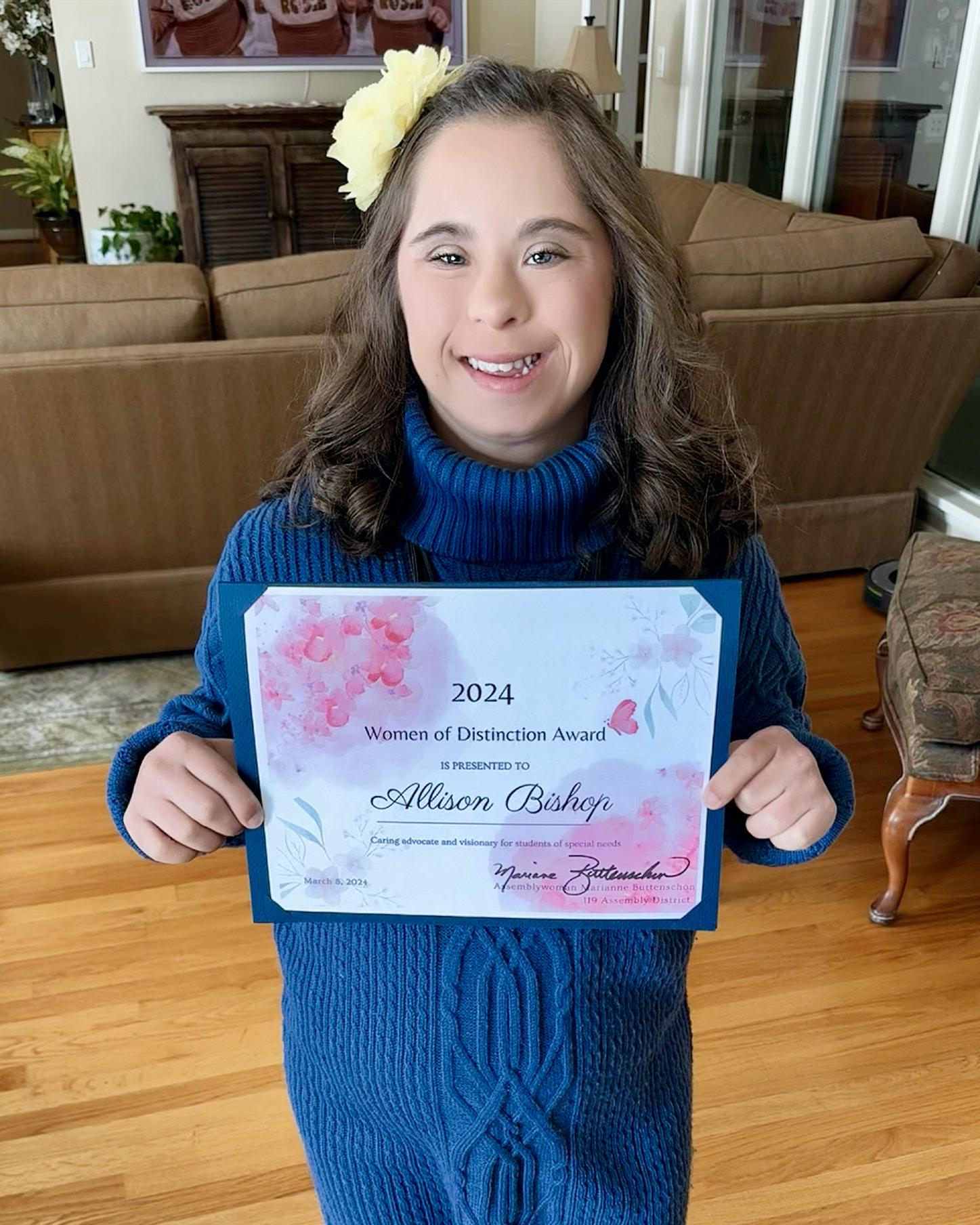
By David L. Podos
Allison Bishop is busy with her business as well as being a board member of The 21 Club.
The Utica native is a cheerful 31-year-old woman. Her laughter is infectious; her positive outlook on life is admirable.
Bishop owns her own business, Allies Celfie Central.
Her business is quite unique using an open-air digital booth. She is able to produce and print photos incredibly fast. She can also provide a host of other services such as having her customers post directly to their timeline on Facebook with any caption they want, to customized branding of logos and much more.
Attention-deficit/hyperactivity disorder (ADHD) diagnoses have increased among adults in recent years, while remaining stable among teenagers.
ADHD diagnoses among adults increased by 15% between 2020 and 2023, after declining by nearly 11% from 2016 to 2020, researchers reported in a new study published in the journal Psychiatric Research and Clinical Practice.
At the same time, teen ADHD rates remained stable between 2018 and 2023, following a significant 26% decline between 2016 and 2018.
These trends “are likely due to a complex interplay of various factors,” said the research team led by physician Erick Messias, chairman of psychiatry and behavioral neurosciences at St. Louis University School of Medicine, said.
You can see Allies Celfie Central at many weddings, graduations and other special events.
Several years ago, I saw her at a friend’s wedding doing her “work.”
Five years ago, I had the pleasure to meet and write my first article about Bishop — who was born with Down syndrome.
When I asked her if she was still busy “taking pictures” she said she was.
“I still take pictures and am busy with Allies Celfie Central. But I am also involved in other projects. I am now a board member of The 21 Club,” she added.
The 21 Club is a nonprofit organization formed by parents and families who love someone with Down syndrome. The 21 Club wants to raise awareness in communities so people with the condition will be accepted and appreciated. As a group, they support families and people with Down syndrome. Their goal is to share information with families so they can make choices about therapies, programs, schooling, job opportunities and other services that may help their loved ones.
“The 21 club is all about people who have the same disability that I have, it was really good for me to become a member. I feel very supportive, also, it is very gratifying for me to know I am helping out others who have Down syndrome. As a board member I am responsible along with other board members to set polices and procedures that will help others and that is a great responsibility that I am happy to take on,” Bishop said.
A few years ago, she along with her mother, Karen, started a cooking class for The 21 Club. They work on recipes, then they make recipe cards. These cards are then given to the members of the club. She and her mother both say that the recipe cards are a big hit and continue to be received with great enthusiasm from the members.
If that was not enough Bishop is also involved in volunteering.
“I volunteer at Hughes Elemen-
tary School where I read to the kids. I love it and so do the kids,” she said.
Bishop was honored with a Woman of Distinction Award for being a caring advocate and visionary for students of special needs from Assemblywoman Marianne Buttenschon this past year. Her “disability” has never slowed her down, nor does she look for any kind of pity or special favors from anyone. When asked what kind of challenges she faces she simply said, “No challenges, just happiness.”
Bishop adheres to a simple philosophy of just being who you are each and every day and doing the best you can.
While she continues to be an ambassador to those who have Down syndrome, she also continues to inspire all she meets, as her mother often says, “everyone wants to be Allie.”
Down syndrome is the most common chromosomal condition for newborns in the country. It occurs when an individual has a full or partial extra copy of chromosome 21, according to the National Down Syndrome Society.
This additional genetic material alters the course of development and causes the characteristics associated with Down syndrome, such as, shorter than average height, possible poor muscle tone and loose joints and intellectual disability often in the mild to moderate area.
Approximately one in every 775 babies in the United States is born with Down syndrome. About 5,000 babies are born in the United States each year with the condition and it can occur in people of all races and economic levels.
For more information on Down syndrome call the National Down Syndrome Society at 800-221-4602, ndss.org
To contact The 21 Club of CNY: the21club.org/contact
ADHD is more widely known and is less stigmatizing as a diagnosis, researchers said. There’s also increased access to health care services that could lead to diagnosis.
“As knowledge about ADHD symptoms improves among healthcare providers, parents and teachers, more cases may be identified and diagnosed,” researchers wrote.
In addition, an expansion of diagnostic guidelines for ADHD might have contributed to the increase.
For the study, researchers reviewed medical records for more than 144,000 patients with the Sisters of Saint Mary health care system, which has locations in Illinois, Missouri, Oklahoma and Wisconsin.
The study represents one of the largest efforts to investigate new ADHD diagnoses among teens and adults before, during and after the

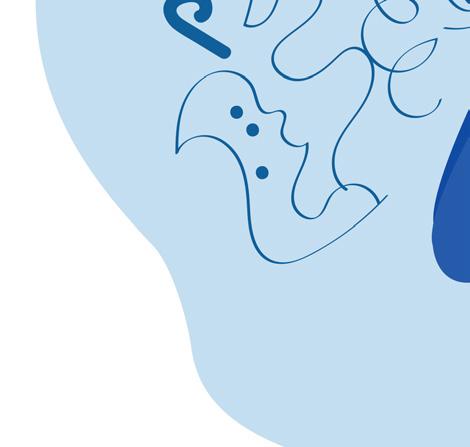



COVID-19 pandemic, researchers noted.
Adult ADHD can be more difficult to spot, according to the Cleveland Clinic. Symptoms can include forgetfulness, procrastination, chronic restlessness, lack of follow-through and frequently misplacing items.
“Findings from this study sup-


port future investigation in identifying potential modifiable risk factors, ensuring sufficient treatment resources, developing targeted interventions, and addressing diagnostic disparities,” the researchers concluded.
The findings were published January 13th
By Anne Palumbo

Basmati rice is my go-to rice, and here’s why: it’s healthier than popular white rice; it boasts a subtle, nutty flavor; and it’s slightly lower in arsenic than most rice.
Let’s begin with why it’s healthier than America’s most-consumed rice.
White rice has a high glycemic index, meaning it can cause rapid blood sugar spikes. These yo-yo spikes, while unhealthy for all, are particularly harmful for those with diabetes or insulin resistance. Basmati rice, on the other hand, especially

whole-grain brown basmati rice, is considered a low-to-medium glycemic index food.
Consuming foods that are lower on the glycemic index is important for many reasons.
It helps regulate blood sugar levels, potentially reducing the risk of developing diabetes (one of the top 10 leading causes of death in the U.S.). It can help with weight control by promoting satiety and reducing the urge to eat during blood-sugar fluctuations. And it may reduce the risk of heart disease, certain cancers
and other chronic conditions, according to trusted studies.
Basmati rice, like most rice, is enriched with certain nutrients to help boost its nutritional value. In particular, basmati boasts decent amounts of iron, B vitamins like folic acid, thiamine and niacin, which together help convert food into energy, and selenium, a powerful antioxidant that helps keep cells healthy.
I always opt for whole-grain brown basmati rice over the refined white version because it’s got more fiber: about 2-3 grams per serving versus less than 1 gram in white. In addition to the obvious benefits of keeping us regular, fiber is your heart’s best friend: it lowers cholesterol; it lowers blood pressure; it helps with weight management; and it improves blood sugar control. Top your basmati with some legumes and vegetables and you’ve created a trifecta of fiber goodness!
In addition to the nutrients listed above, an average 1-cup serving of brown basmati rice has about 200
Serves 6
3 cups cooked basmati rice, cooled
3 tablespoons olive oil
2 leeks, thinly sliced (white and light green parts)
12 ounces asparagus, sliced on the diagonal in one-inch pieces
2 garlic cloves, crushed
2 teaspoons dried basil
Salt and pepper to taste
1 cup shelled edamame, defrosted if frozen
lemon juice and zest
¼ teaspoon red pepper flakes (optional)
Turns out, Americans may be drinking less coffee, soda and tea, but they're getting more caffeine than ever.
A new study of more than 49,000 U.S. adults found that while fewer are sipping caffeinated drinks, those who do are choosing much stronger doses, with coffee taking the lead.
The result? Caffeine intake is rising, even though the average consumption is still below 400 milligrams of caffeine per day. That's the amount health experts consider safe.
“We are all aware that the
caffeinated beverage market has changed dramatically over the past 10 years, yet no comparable, comprehensive caffeine intake data have been published in recent years," study author Diane Mitchell of the Institute for Advancing Health through Agriculture, Texas A&M AgriLife, said in a news release.
Coffee now accounts for 70% of total caffeine consumption, up 15% from the previous 2010-2011 survey, Mitchell's team reported.
What's more, carbonated soft drinks now contribute only 15% of
½ cup nut of choice, chopped (optional)
1. Prepare rice according to instructions. Let cool. (Can be made a day ahead.)
2. In a large non-stick skillet, heat 2 tablespoons olive oil to medium. Add the sliced leeks and sauté until wilted, about 2 minutes (okay if some get crispy). Next, add asparagus and cook for 5 minutes more, stirring frequently, until the asparagus is
Consider reducing your rice consumption if arsenic levels concern you. According to many studies, big rice eaters (about ½ cup of rice per day) have consistently high arsenic levels, no matter the type of rice. Research has shown that, over time, arsenic can harm your health and potentially increase your risk of certain cancers. To reduce arsenic, some suggest rinsing raw rice before cooking and using a large amount of water to cook rice, which is then drained.
calories, 4g of protein, and 34g of carbohydrates (the complex kind that take more time to break down).
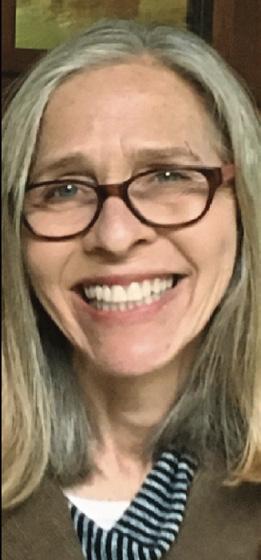
tender-crisp.
Anne Palumbo is a lifestyle columnist, food guru, and seasoned cook, who has perfected the art of preparing nutritious, calorie-conscious dishes. She is hungry for your questions and comments about SmartBites, so be in touch with Anne at avpalumbo@aol.com.
3. Add garlic, basil, salt and pepper and stir for 1 minute more. Gently mix in edamame. Remove from pan and set aside.
4. With heat still on medium, add the remaining tablespoon of olive oil to pan, swirl around, then add rice, pressing down to make a single layer to brown rice. Let the rice cook, undisturbed for 5 minutes. Stir in vegetable mixture and cook until heated up, about 2 minutes more.
5. Serve; sprinkle with some lemon juice and zest; garnish with optional ingredients. Enjoy!

caffeine intake, a 27% decrease from a decade ago. Tea consumption has also dropped significantly, with 50% fewer tea drinkers overall.
However, the remaining tea drinkers nearly doubled their caffeine intake from tea, suggesting those who stuck with the beverage are, in fact, drinking more. Energy drinks, which were less common a decade ago, now account for 6% of total caffeine intake, as the
number of available brands has jumped from 559 to 970. Despite these shifts, average caffeine intake remains below the federal government's recommended limit of 400 milligrams per day — about two to three 12-ounce cups of coffee.
“With a constantly evolving market of caffeinated beverages and the potential impact it has on beverage consumption patterns, continued monitoring of caffeine intakes is warranted," the authors concluded.

By Jolene Cleaver
Thisstory is part of a two-part project examining the impact small hospitals are making in the Mohawk Valley and surrounding area.
Whether it’s large-scale renovations, addressing community needs or boosting recruitment activities to bring highly skilled medical professionals to the area,
hospital leaders say their focus is on not just tomorrow, but the future. Tag along as Rome Health, Oneida Health, Little Falls Hospital and Community Memorial Hospital in Hamilton talk about the diverse geographic footprints they serve and how they are adapting to ever changing medical advancements.
What are smaller hospitals in the Mohawk Valley region doing to beef up services to fill community needs, especially when it comes to offering rural healthcare services and specialties?
The answer might surprise you as two small, community hospitals on the western end of the Mohawk Valley are making big, long-term investments in facilities, staffing and services to meet the needs of the diverse populations they serve.
At Rome Health, chief operating officer Ryan Thompson said there is work being done to offer more surgical services and upgrade the ICU with more space and more amenities in a $45 million project.
Since 2021, through public funding and private philanthropy, the hospital has built state-of-the-art facilities, including the new medical center and women’s surgical suite.
The new ICU and Kaplan Center for Surgical Services are expected to open mid-year 2025. The project involves constructing a 30,000 squarefoot, three-floor addition on the north side of the hospital, which replaces operating rooms and intensive care units.
In recent years, Rome Health also has been able to expand access to care by launching new programs like robotic surgery, primary stroke designation and advanced gastroenterology procedures and recruiting new providers.

The work completed over the last few years started with a master facility plan in 2020, Thompson said, adding that when staff were planning for ICU expansion, for example, they were diligent in “making sure they are co-located for the best patient experience.”
It was an opportunity to really examine flow and efficiency from a working staff perspective. There was staff involvement from the start. Floor plans were simulated at scale, he said.
“Not only do we have construction going on, but continual planning. We talk about what it’s going to take to move around this space,” he added. “All of these things help a person heal during their stay.”
Headed up by CEO AnneMarie Czyz, Rome Health has 928 full-time employees and Rome Health’s total patient revenue increased nearly 29% in 2024, compared to 2023, according to information provided by the hospital. When it comes to the service area, patients are coming from Oneida County, southeastern Oswego County and Madison County.
Rome Health will continue to advance its facilities and services in 2025 as part of its ongoing transfor-
mation plan.
In mid-2025, the hospital will open a new ICU and the Kaplan Center for Surgical Services to enhance the experience for patients and their families while supporting the care team in delivering advanced life-saving care.
Rome Health will add a second daVinci surgical system in 2025 as a result of the rapid adoption of the technology by its surgeons.
The hospital is partnering with Turning Stone Resort and Casino to create Áhsi’ Aesthetics by Rome Health, a new medical aesthetics practice located at the resort. The grand opening was March 6.
Looking down the road toward 2027, there are plans for a hybrid room for more invasive surgeries.
According to a statement: “The hospital has embraced advancements like robotic surgery, which enhances precision and reduces recovery times for patients. The hospital will be investing in a hybrid operating room that accommodates more technology and larger teams of specialists to perform advanced interventional and surgical procedures. Additionally, the hospital is exploring the adoption of virtual nursing to supplement its existing nursing staff.”
Little Falls Hospital sees growth, looks to future
At Little Falls Hospital, Heidi Camardello, the director of nursing and operations, said that in 2024, there
were roughly 18,000 patients seen in the emergency room.
“We’re the third busiest ER in the [Bassett Healthcare] network,” she said, adding there are five hospitals in the Bassett network which covers a 5,000 square mile footprint in Upstate New York.
Susan Oakes Ferrucci, president and chief nursing officer, said the hospital is always looking to “enhance the services we have. We have a great surgery, ambulatory and outpatient service.”
The hospital is striving to find efficiencies to pave the way for local service improvements and has recently undergone operating room improvements, as well as upgraded their instrument sterilization units.
Looking forward five years, emergency room enhancements and recruitment and retention are the ongoing goals, hospital leaders said.
Numbers and more
Little Falls Hospital in Herkimer County is part of the Bassett Healthcare Network and was founded in 1893. It joined Bassett Healthcare Network on Oct. 1, 2004.
In 2024, 726 surgeries were performed at the hospital.
One hundred eighty-one staff members are currently employed at Little Falls Hospital.
It is a critical access hospital in the Bassett Network, which is tasked with serving a rural population in a set distance.


Work continues at the Community Memorial Hospital entrance March 5. The hospital is going through a $31.5 million renovation, expansion. Among other things, it will feature a new main entrance for patients, families and visitors to access the hospital and ensure enhanced patient safeguards.
At Hamilton’s Community Memorial Hospital, a $31.5 million facility project that will expand and renovate patient care spaces is well underway.
The hospital opened in 1952 and the last big upgrade was in the 1980s when an ambulatory wing was added, said Community Memorial Hospital President and CEO Jeffery Coakley.
So, a transformation was due.
The project — the largest renovation of the facility to date — will revitalize the facility and equipment, improve patient care and help safeguard more than 400 jobs present at the hospital, Coakley said.
Barring any unforeseen challenges, Community Memorial and construction management group, Hayner Hoyt Corp., expect the completion of the project toward the end of 2025.
And that end date will be more than five years in the making.
Coakley said planning for this project began in 2019 with the hospital community asking itself, “How do we get to a higher level of care?”
When he came on board at Community Memorial in November of 2020, work on the project had just begun.
The first leg of the project — completed in December of 2021 just as the region experienced a spike in COVID-19 infections — updated the inpatient wing and the emergency department.
This work has already proven critical as the hospital has seen overall growth of the emergency department operations to the tune of 17% since the pre-pandemic days.
Current construction work at the hospital is geared toward bringing ancillary services to the foreground by renovating space and upgrading
equipment in the radiology department, laboratory, rehabilitation center and the main entrance.
The details
• The new radiology department will be centralized inside the hospital and new equipment purchases include a CT scanner, MRI machine and digital mammography unit.
• The laboratory department will have an expanded waiting space for patients with updated blood draw rooms.
• The updated Center for Rehabilitation at Community Memorial — which includes physical, occupational and speech therapies — will also be expanded.
• The new main entrance will feature a larger waiting space and a cohesive exterior to the new emergency department entrance.
“We needed to replace diagnostic and ancillary services,” Coakley said, adding that additional project improvements will make for a “modern, efficient operating theater.”
“A facility that represents the quality of care being delivered. … It all works together,” Coakley said of identifying community needs, finding workflow efficiencies in the project planning stage and seeing it transferred to construction.
The crew at Community Memorial feels that improvements will help not just tomorrow, but set the tone for healthcare missions for decades into the future.
Oneida Health expands orthopedics, stroke services
Traveling to the north end of Madison County, another small hospital is taking big steps to serve its community.
At Oneida Health, Sara Reinhardt, director of marketing and development, recently chatted about how across the state and nation there is a huge deficit in primary care medical staff and Oneida Health has been doing well in recruitment.
To combat this trend, in recent accomplishments, Oneida Health has added medical offices and quick care facilities to its community offerings.
Last October, Hamilton Orthopaedics Spine and Sports Medicine (with offices in Hamilton and New Hartford) became an official partner of Oneida Health.
This partnership provides for Hamilton Orthopaedics surgeons Rudolph Buckley and Russell LaFrance to perform most of Hamilton Orthopaedics’ hospital-based surgical procedures in the Oneida Health operating room at Oneida Health.
More recently, in February, Oneida Health became a member of the Telestroke Network at Upstate University Hospital’s Comprehensive Stroke Center in Syracuse, Reinhardt said.
The network works by allowing Upstate University Hospital to connect its stroke specialists with the medical staff at Oneida Health to aid in the assessment and care of patients at the Oneida facility who may be experiencing a stroke.
For example, when a patient arrives at the Oneida Health emergency department and is exhibiting symptoms that coincide with a stroke, staff at Oneida Health can now consult with an Upstate stroke specialist, via a video conference connection.
Through that connection, Upstate stroke specialists can view the CT brain scan, examine the patient and talk with patients, families and physicians about early intervention and facilitating care, both are crucial steps in improving outcomes for patients

suffering a stroke.
“Being part of Upstate University Hospital Stroke Center’s Telestroke Network enables our patients to receive top-notch stroke care from specialized neurologists at a tertiary care facility while remaining at their local community hospital,” said Felissa Koernig, president and CEO of Oneida Health, in a statement.
Looking forward
“We continue to build out care,” Reinhardt said, of the independent nonprofit hospital. As the hospital goes into 2026, primary care will continue to be the growth focus.
And it is a constant need.
Reinhardt added that since 2023, emergency department and quick care visits numbers have been elevated, like many hospitals in the area.
Overall, the hospital sees patients coming from Herkimer and Oneida counties, all over Madison County and even from the Syracuse area.
By Deborah Dittner
Asimple quote I found that says it all — “Love your feet, love yourself.”
If you take care of your feet, you are actually looking after your whole self. Of course, there is more to it than that. However, looking at proper foot health will guide you to improved mobility later in life.
Your feet carry you through life from very young in age to very old. Without proper foot care, you may miss out on certain life situations. So…how do you care best for your feet?
• Walking, or better yet, barefoot walking can help you connect with the earth. There are numerous sensory receptors on the bottoms of your feet needing to “feel” the ground and allowing you to freely move your toes. You can’t always be barefoot so finding proper fitting shoes is essential. There are athletic shoes, dress shoes, work shoes, boots, sandals and more but finding those which suit your feet and any anatomical issues can be challenging. Some may have high arches and others may have flat feet. Bunions also create challenging footwear needs.
The footwear you choose should be comfortable and support the foot’s regular position. Some may need a wide toe box especially if bunions are a concern. A proper fitting shoe will allow your toes to move and not limit the front of the foot.
The amount of cushioning depends on the activity. If you are walking on cement for hours on end,
you will want a shoe with increased cushioning and the wide toe box.
• Strength training for your feet. There are many exercises to choose from with numerous benefits such as improving flexibility, balance, reducing discomfort and overall strength. Here are some to consider:
Toe raises — standing on your toes for a few seconds then lower back down (great for strengthening the calves).
Heel raises — opposite of toe raises.
Toe spreads — spreading your toes wide apart, hold a few seconds, then release.
Toe taps — tap your toes individually or all together from forward to side to back (great for balance).
Toe curls — curl your toes under, hold for a few seconds then release. You can also place a towel under your feet and grasping the towel with your toes to gather.
Tree pose (yoga) — stand on one leg with the other foot held at the ankle, the calf or the thigh (never at the knee). Build up the time as your balance and strength increase.
Massage — place a tennis ball under your arch and move the ball around in a circular motion then reverse. No tennis ball? Use your hands to massage the foot. This works out tension, increases circulation and decreases any tightness.
With any type of exercise, begin slowly and increase the repetitions as tolerated. These can be done on a daily basis or at least several times a

By Barbara Pierce
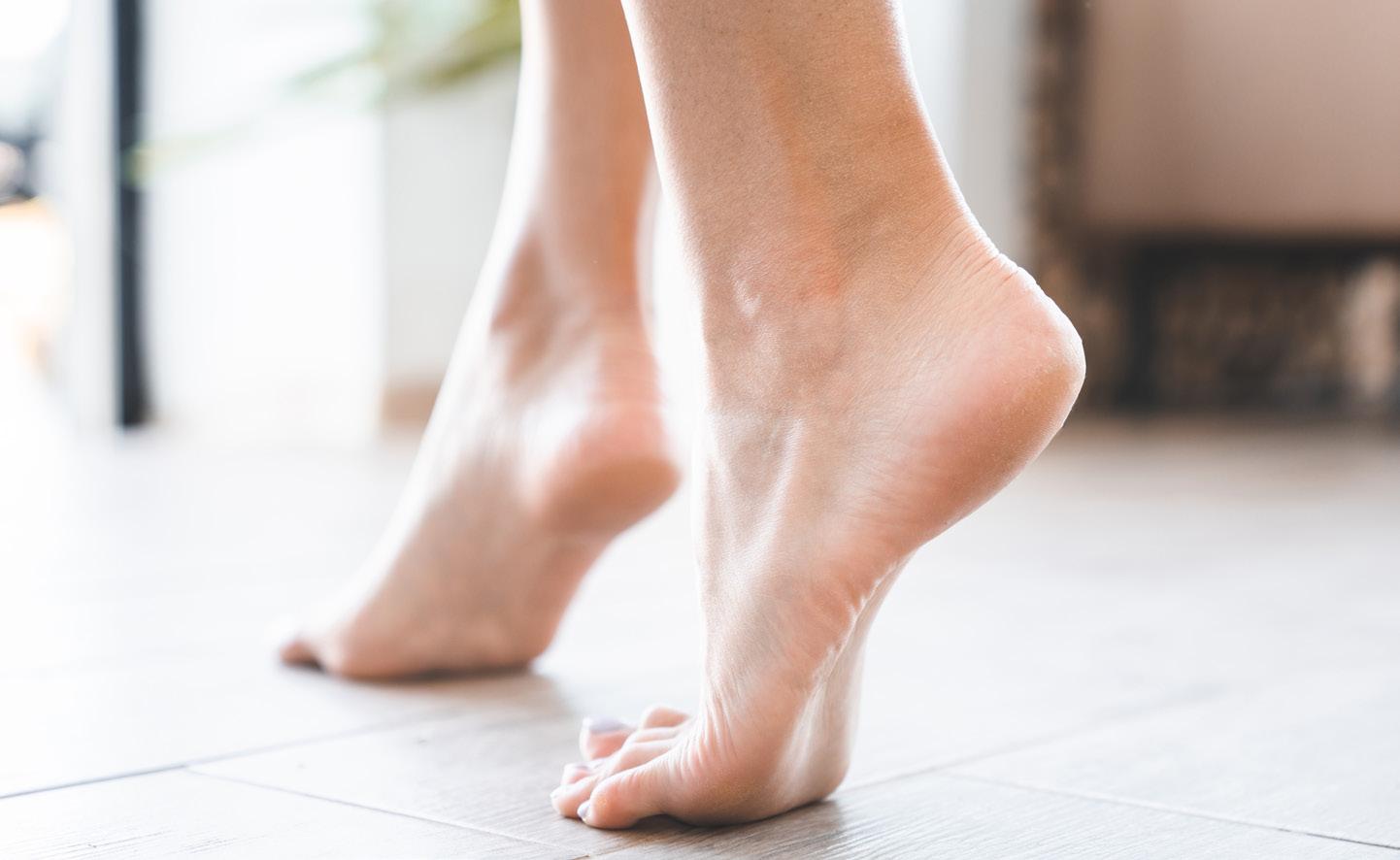
week. If any pain occurs, stop the exercise and check in with your healthcare provider.
Problem issues can also arise requiring immediate action:
• Blisters — often caused by improper fitting shoes or shoes that did not supply the necessary support for the activity. Shoes that support the arches and allow for proper foot alignment will help keep blisters at a minimum.
• Plantar fasciitis — the band of tissue supporting the arch of your foot becomes inflamed causing heel pain and decreased mobility. Stretching prior to and after exercising is important as this may result in discomfort up your legs and as far up as your neck. Follow up with your healthcare provider.
• Bunions — the bony bump at the base of your big toe. It is often said that bunions are caused by tight, narrow fitting and/or high heeled shoes. Proper fitting footwear is the best prevention. Using toe spacers may also prevent and relieve the discomfort of bunions.
health. But research suggests that many of us wear shoes that are the wrong size or ill-fitting.
Poor shoe choices can significantly impact your health by causing various foot problems like blisters, calluses, corns, bunions, plantar fasciitis, hammertoes and ingrown toenails. Any of these can lead to pain, discomfort and even affect your overall body alignment, causing back pain as well.
What to consider when choosing shoes?
“Making sure the shoe fits you properly,” should be your first consideration, said Schara. “I’m a firm believer in going to a shoe store where they will measure your feet — this makes a huge difference. They’ll match your foot structure to the right shoe. This is a huge service.”
A lot of people don’t know this. But the representative in the shoe store is knowledgeable; they will try to point you to the right shoes with a foot-measuring device.
Wearing shoes that don’t fit right or aren’t right for the activity you’re doing can cause a lot of foot problems — problems that can be painful and can interfere with your ability to walk. We depend on our feet. Most of us take our feet for granted.
Choosing the right shoes is important to preventing foot-related problems.
“Having a proper shoe minimizes problems,” said Wendy Schara, a doctor of podiatric medicine at Foot Doctors of Utica.
Wearing well-fitting, supportive shoes can have a big effect on your
Proper fit is the most crucial aspect for a shoe. Your shoes should be neither too tight nor too loose. Ensure there’s adequate space for your toes to wiggle comfortably. There should be about an inch between your toes and the tip of your shoes.
Stand up as the representative uses measures your feet, as your feet
Most importantly — pay attention to any discomfort your feet may experience.
If your feet hurt at the end of the day or you have developed knee or hip discomfort, consider any changes that have occurred in your footwear.
The sooner these issues are addressed, the better the healthcare of your feet adding improved function and mobility. So before any issues occur, wear proper fitting, wider toe box shoes, use toe spacers, strengthen your feet with exercise and walk barefoot whenever you can. Your feet (and body) will thank you!
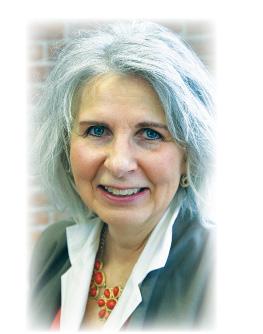
Deborah Dittner is a family nurse practitioner and health consultant. Her mission is to transform as many individuals as possible through nutrition and lifestyle changes. www. debdittner.com
are longer when standing. Have both feet measured, as often one foot is larger. Fit the shoes to the larger foot. Also, as feet tend to swell throughout the day, it’s best to try on shoes later in the day.
“Don’t always assume you are the same size, as sizes vary among brands and styles,” said Schara. Choose a shoe that fits the shape of your foot that conforms as nearly as possible to the shape of the front, widest part of your foot.
“When you’re buying shoes, try them on in the store, walk around in the store. Then, wear the shoes at home multiple times to make sure they’re comfortable. As long as the shoe isn’t worn, it can be returned if it isn’t comfortable,” Schara added. Make sure the shoes are comfortable from the start. If they don’t feel right, you can’t break them in later. Shoes can’t be ‘broken in.’ Pain is a signal to tell you that something is wrong. The next important consideration is to choose shoes that are designed for the specific activity you’ll be doing, whether walking, running or standing for long periods of time. Different activities require different types of shoes. Running shoes, for example, differ from walking shoes or work boots. Consider the specific demands of your activity when
‘Medicare covers one pair of shoes per year if you have diabetes and a diagnosed foot problem.’
choosing footwear.
For example, if you spend a lot of time standing or walking on hard surfaces, opt for shoes with softer soles and supportive insoles to distribute pressure evenly. Lace-up boots can help maintain proper foot alignment and reduce soreness.
If you’re involved in sports several days a week, you can find specific shoes for weight-lifting, cycling, hiking, tennis, basketball, soccer and more.
Custom shoe inserts prescribed by a podiatrist can provide personalized support and improve foot posture.
Next, look for shoes with good arch support and heel cushioning. This helps absorb shock and reduce foot fatigue. Proper arch support helps maintain the natural alignment of your foot.
People have different arches — normal, flat or high arches. Choosing shoes that fit with your arch type is essential for comfort and support.
Plantar fasciitis is a common, very painful foot condition, causing heel pain. It can be triggered by shoes lacking proper arch support, like flip-flops.
Cushioned soles provide comfort and protection from impact and reduce stress on your feet and joints. The right amount of cushioning depends on your weight, activity level and foot type.
Some people have a higher risk of developing foot problems than others, especially those with poor sensation and circulation in their feet, due to diabetes or vascular diseases.
“People with diabetes have more difficulty with shoes,” said Schara. “They need to have a wider toe box as any pressure on the toes can cause a breakdown. They also need a multi-density insole.”
“Having a proper shoe minimizes problems for diabetics,” she added. “Medicare covers one pair of shoes per year if you have diabetes and a diagnosed foot problem.”
A doctor must certify your need for diabetic shoes and a podiatrist must prescribe the shoes.
Choosing the right shoes contributes to your overall well-being. By choosing the right shoes, you’re safeguarding your mobility and independence.
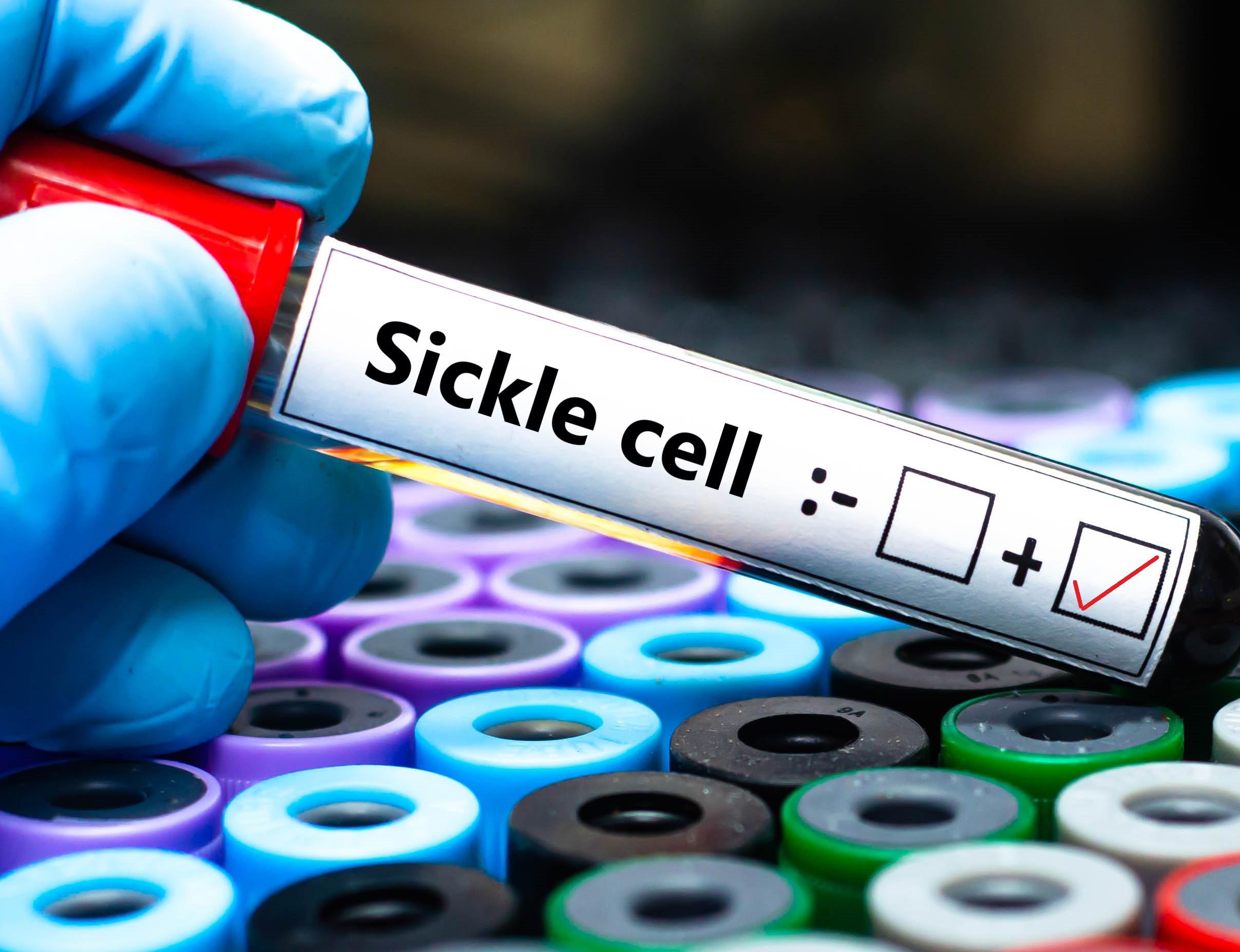
By Barbara Pierce
Sickle cell disease remains a significant — yet largely neglected — global health crisis, impacting millions of people worldwide.
Also known as sickle cell anemia, this blood disease is a devastating one that severely disrupts and ends early the lives of those who suffer from it.
It takes a huge toll — physically, emotionally and financially.
SCD is an inherited blood disorder, caused by a genetic defect. It causes the body to make abnormal hemoglobin. Hemoglobin is the protein in red blood cells that carries oxygen to all parts of your body. When you have SCD, your body’s tissues and organs don’t get enough oxygen.
John Hopkins describes it like this online: Healthy red blood cells are round and move easily all over the body. With SCD, the red blood cells are hard and sticky, shaped like the farm tool called a sickle. These damaged red blood cells clump together and can’t move easily through the blood vessels, getting stuck and blocking the flow of blood. This blockage can cause pain as it stops the movement of healthy oxygen-rich blood. It can also damage major organs.
Having a family history of SCD increases your risk for the disease. SCD mainly affects people whose families came from Africa, Central America, South America, the Middle East, Asia, India, the Mediterranean or Southern Europe. One in 365 African American babies in the US is born with SCD.
Each person’s symptoms vary and vary from mild to severe. Some of the symptoms include severe anemia, which causes lack of energy, jaundice, pain which can come on suddenly, stroke, erectile dysfunc-
tion, damage to the joints and organs and a life-threatening condition called acute chest syndrome.
“Living with sickle cell disease is like navigating a storm that rages within your body, where waves of pain crash down, stealing away the peaceful moments of sleep you so desperately long for,” said Sakiyyah Burwell-Darden on Facebook. “Each day is a quest for relief that often feels just out of reach, leaving you to find solace in the smallest victories — if only you can ease the pain ever so slightly.”
Things that could trigger a crisis include high altitudes, cold weather or sudden changes in temperature, swimming in cold water, heavy physical labor, decongestants, stress or exhaustion, alcohol and smoking.
In December 2023, the FDA approved two new gene therapies for the treatment of sickle cell disease. This is a breakthrough, as it is the first gene therapy for the treatment of SCD, according to Daniell De Souza of the New York State Department of Health.
These are transformative therapies for SCD, available for patients aged 12 or older, signaling innovative advancements in the field of gene therapy, said De Souza.
Both of these treatments modify the patient’s own blood stem cells. Prior to treatment, the patients’ own stem cells are collected and then the patient must receive high-dose chemotherapy, a process that removes cells from the bone marrow so they can be replaced with the modified cells.
The blood stem cells are modified, then given back as a one-time single dose infusion as a stem cell transplant. The modified hemoglobin prevents the sickling of red blood cells.
In a previous trial, 93.5% of participants achieved a positive outcome from one of the therapies; for the other, 88% reached a significant and positive outcome.
They are a new and sophisticated approach compared to traditional treatments like blood transfusions or pain medication. The cutting-edge treatments have brought hope to those with SCD, but their high price tags are a barrier to access. The new therapies come with a price tag of as much as $3 million for a course of treatment, which can take up to a year, making them inaccessible to most.
That’s the bad news. The good news is that the manufacturers of these two FDA-approved gene therapy treatments have entered into agreements with the Centers for Medicare & Medicaid Services to participate in the cell and gene therapy access Model.
The CGT access model is a promising effort to reduce cost for these potentially curative therapies for those who are eligible. The model launched in January of this year. New York state is participating; several treatment facilities across the state are beginning to offer the treatment.
Here in the Mohawk Valley, we learned that the numbers of people diagnosed with SCD is small, so we were unable to obtain information about where they could learn more about the new treatment.
The New York State newborn screening program provides screening for SCD disease and other genetic diseases for all babies born in New York state. This allows babies who have SCD to be identified quickly and treated early. Early diagnosis and treatment can reduce the risk of problems.
By Barbara Pierce
Sexually transmitted infections — namely syphilis, gonorrhea and chlamydia — have increased significantly both nationally and in New York state since 2000, according to Public Information Officer Monica Pomeroy of the New York State Department of Health.
“While most STI diagnoses are seen in younger individuals, there has been a steady increase in diagnoses in senior citizens, people older than 60,” she added.
STIs jumped nearly a quarter among seniors since the pandemic.
Researchers speculate this rise is simply because older adults are having more sex than in generations past. And without a fear of pregnancy, they’re not using protection.
Yes, older people are having sex. 40% of those older than 65 report being sexually active according to a study done by the University of Michigan. And liking it. Most say sex is important to their quality of life. That’s the good news.
The bad news is that STIs are surging among older people.
Between 2017 and 2022, early syphilis, gonorrhea and chlamydia diagnoses in seniors increased by 116%, 104% and 62% respectively, said Pomeroy. For older folks, syphilis cases are now nearly 700% higher than in 2010, gonorrhea has grown by 600%, chlamydia has quadrupled, said the CDC.
That’s an immense surge. A skyrocketing increase.
You may know these cases as sexually transmitted diseases. The wording was changed because the word “disease” suggests noticeable medical problems. Many of the most common sexually transmitted infections have no signs or symptoms or they are very mild. Even with no
signs or symptoms, STIs can cause serious health problems, so it is still necessary to get tested and treated for STIs.
STIs are caused by bacteria, viruses or parasites and can be treated with antibiotics, antivirals or medications. Most STIs go away after treatment, but some may require lifelong management.
They can be treated with the right medication, but they do cause complications if left untreated. This is especially true for older adults, who often have other medical conditions that could worsen with an infection.
Why does this matter? It matters because if older folks get STIs they can be more difficult to handle and may be more difficult to diagnose. As people age, their immune system weakens making it harder to fight off infections.
Symptoms of STIs can be mistaken for other infections or common problems of aging. For example, gonorrhea can cause arthritis-like symptoms, and HIV can cause weakness and fatigue. Also, medications used to treat STIs can interact with other medications.
How can the rising STI rates for older adults can be explained? “A number of factors contributed toward increases in STIs in seniors,” said Pomeroy.
Some of these factors, Pomeroy states, include changing attitudes about sex and lack of knowledge or understanding about STIs. Also, older adults may believe they have a low or nonexistant risk of acquiring an STI.
Additionally, their health care professional doesn’t often ask about whether they are sexually active, assuming they are not. Unless you bring it up with your health care
The number of people with Parkinson’s disease will more than double by 2050, driven by the aging of the global population, a new study suggests.
In all, 25.2 million people will be living with Parkinson’s by 2050, researchers project in The BMJ.
“An urgent need exists for future research to focus on the development of novel drugs, gene engineering techniques and cell replacement therapies that are aimed at modifying the course of the disease and improving patients’ quality of life,” concluded a team led by senior researcher Tao Feng with the Beijing Tiantan Hospital Center for Movement Disorders in China.
Parkinson’s disease occurs when brain cells related to movement become impaired or start to die, according to the National Institute on Aging (NIA).
As these cells die, people lose the ability to control their body’s movement. They might shake uncontrollably, become stiff or develop problems with balance and coordination.
Age is a clear risk factor for Parkinson’s with most developing the disease after age 60, the NIA says.
Parkinson’s disease is the second-most common neurodegenerative disease in the world, and the fastest growth in terms of prevalence and disability, researchers said in background notes.
To predict future trends in Parkinson’s, researchers analyzed data from an ongoing study tracking the global rates of diseases. Their data included 195 countries and territories.
Their models projected that the number of people with Parkinson’s by 2050 will increase by 112%.
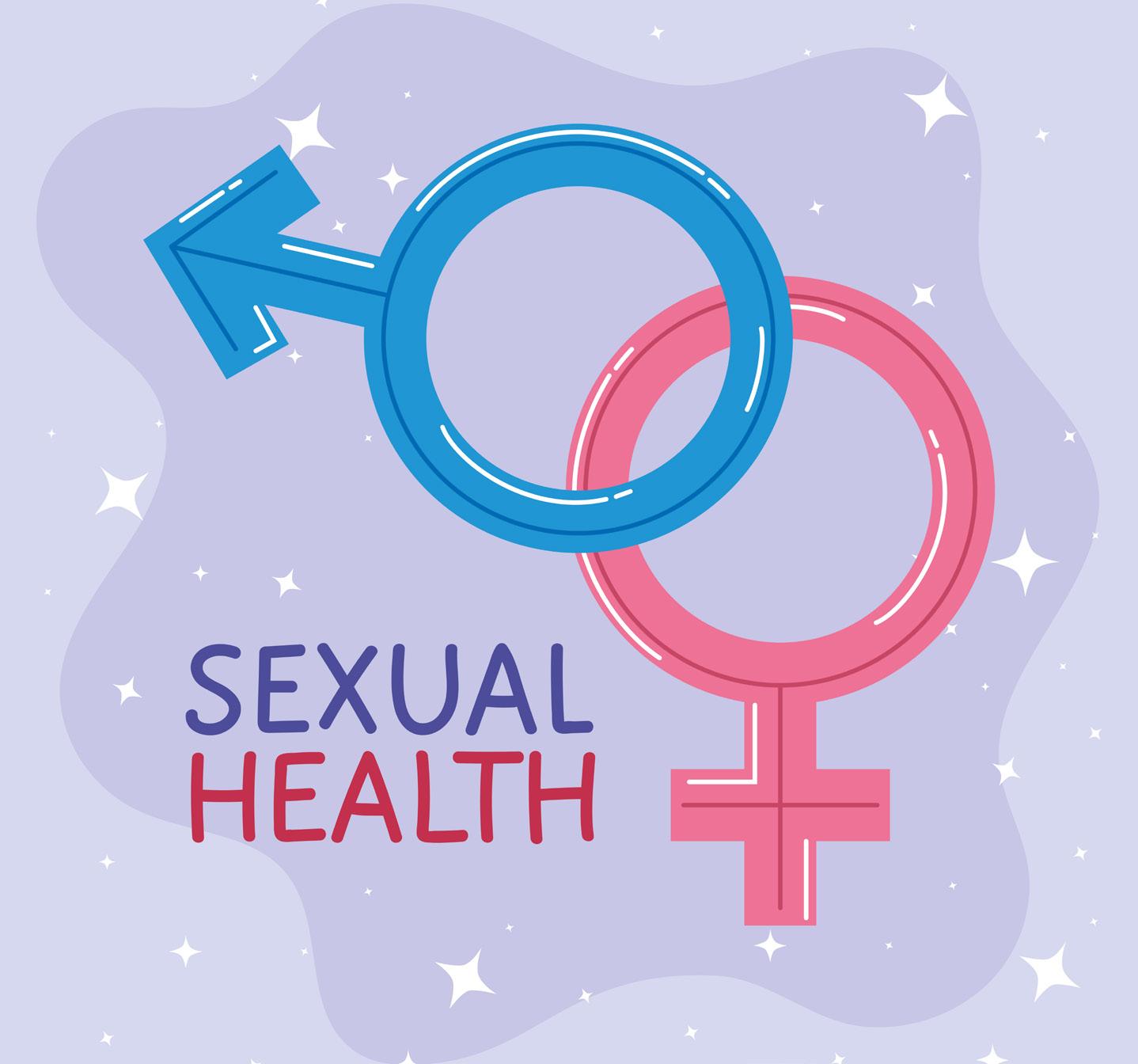
provider, it doesn’t get discussed. This results in a missed opportunity to screen, diagnose, treat and educate older adults and thereby reduce the risk of getting and transmitting an STI.
Others point to the fact that the market for devices and medications that address sexual health problems is flourishing. After the introduction of Viagra, the risk of STDs increased significantly among widowed men.
Another factor is that online dating services are increasingly attracting older people. And older people are more likely to live in senior communities and have multiple partners.
This is a generation that came of age with “free love” — education about sexually transmitted infections didn’t become common until the 1980s. They may carry this perspective of sex and free love into their later years but fail to incorporate the safe sex component that is being taught to younger generations. Lack of concerns regarding pregnancy for partners in this age cohort results in far less use of condoms.
Symptoms of a STI can vary depending on the type of STI. Symptoms may include bumps, sores or warts around the genitals, mouth or rectum, vaginal or urethral discharge, painful urination or sex, itching, soreness or bleeding around the anus, stomach pain or fever.
Some people may not have any symptoms or their symptoms may improve on their own. It’s also possible to pass an STI on to others without knowing it.
Some things to consider if you’re an older adult who is sexually active: If you have a new partner, both get screened for STIs before having sex. Use condoms. If you experience any unusual symptoms after sex, don’t delay treatment.
More information about STIs, including fact sheets and the most recent data and statistics, is available on the New York State Department of Health website: www.health.ny.gov/ diseases/communicable/std.
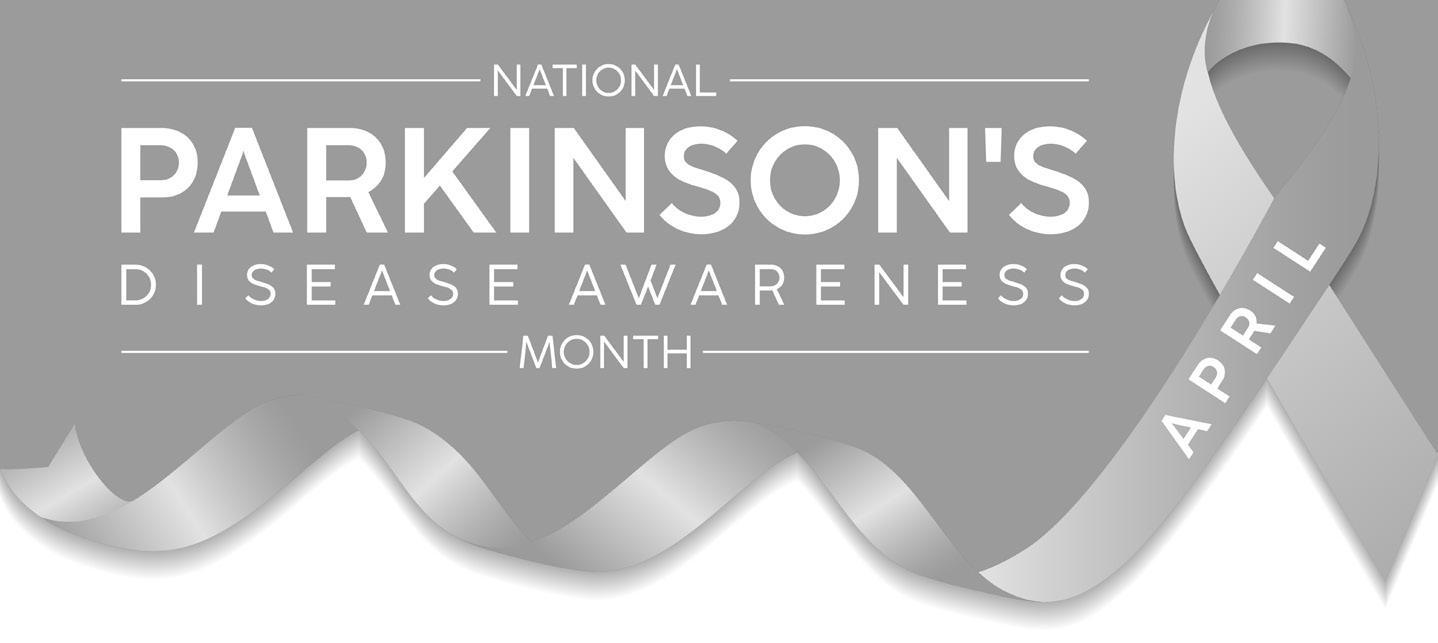
The aging of the population will be the main driver behind this increase, associated with 89% of new cases, results show.
The most pronounced increase in Parkinson’s cases is expected to occur in western Sub-Saharan Africa, where the number of people with the disease will nearly triple (292%), researchers said.
The smallest increases are projected in central and eastern Europe, with 28% more cases. The population in those nations is decreasing, re-
searchers said, and there’s less effect from population aging.
More men than women develop Parkinson’s disease, and researchers project that gap will increase in the coming decades — widening from 1.46 in 2021 to 1.64 in 2050.
These projections “could serve as an aid in promoting health research, informing policy decisions, and allocating resources,” researchers concluded.
The findings were published March 5.
By Jim Miller
Dear Savvy Senior,
What are the risk factors for kidney disease? My mother died from kidney failure a few years ago at age 75 but didn’t even know she had a problem until it was too late.
Inquiring Daughter
Dear Inquiring,
Anyone who has diabetes, high blood pressure, heart problems or has a family history of the disease is at increased risk for chronic kidney disease, a condition in which the kidneys can no longer effectively filter your blood.
According to the Centers for Disease Control and Prevention, around 37 million U.S adults have chronic kidney disease, and millions more are at risk of developing it, yet most people don’t realize it.
That’s because kidney disease develops very slowly over many years before any symptoms arise. But left untreated, the disease can eventually require people to spend hours hooked up to a dialysis machine or get a kidney transplant. Even mild kidney problems can double a person’s risk of heart attack and stroke, as well as cause anemia and bone disease.
The reason kidney disease has become so widespread today is because of the rise of obesity, Type 2 diabetes and high blood pressure which all strain the kidneys.
Another factor is the increasing number of people who take multiple medications, which can overtax the organs. People over age 60 are especially vulnerable both because they tend to take more drugs, and because kidney function normally declines somewhat with age.
Because kidney disease is often symptomless, it’s usually undiagnosed. The only way to catch it before it advances is to have a routine blood and urine test by your doctor. So, anyone that has diabetes, high blood pressure or heart disease, or is age 60 or older needs to be tested annually.
If your lab tests show a decline in kidney function for more than three months in a row, you might be diagnosed with kidney disease and referred to a nephrologist. You also need to know that while kidney damage cannot be reversed, there are a number of effective lifestyle steps and treatments that can help contain the damage, including:
• Control your blood pressure: If you have high blood pressure, get it under 130/80. If you need medication to do it, ACE inhibitors and
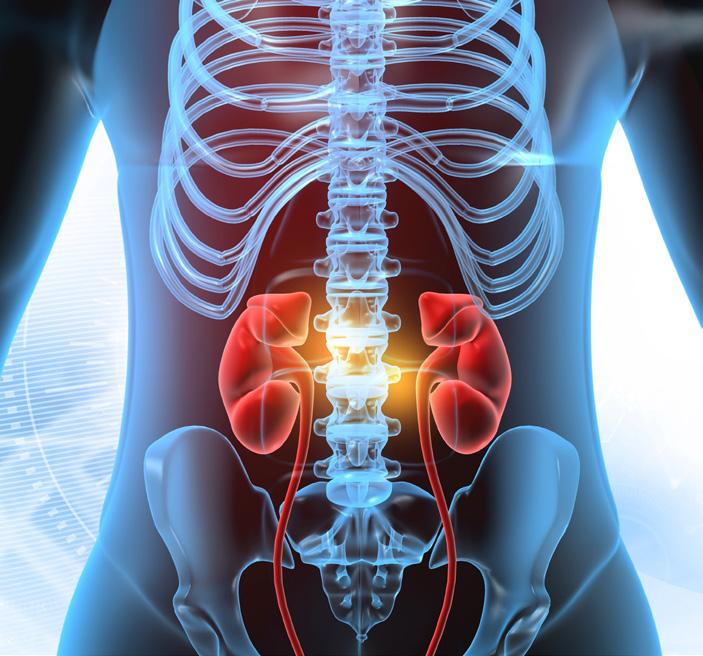
ARBs are good choices because of their proven ability to protect the kidneys.
• Control your diabetes: If you have diabetes, keep your blood sugar as close to normal as possible. Diabetes medications called SGLT-2 inhibitors have also shown to be effective in helping slow the progression of kidney disease, even in non diabetic patients.
• Adjust your diet: This usually means reducing the amount of protein and phosphorus you eat and cutting back on sodium, sugar and possibly potassium. Your doctor can help you determine an appropriate eating plan, or you may want to talk to a dietitian.
• Watch your meds: Dozens of commonly used drugs can damage the kidneys, especially when taken in high doses over long periods — most notably NSAIDs like ibuprofen and naproxen. Proton pump inhibitor (PPI) medications taken for heartburn and GERDS, and herbal supplements can also be problematic. Talk to your doctor about all the prescription, over-the-counter and herbal products you take to identify potential problems and find alternatives.
• Exercise and lose weight: If you’re overweight and inactive, start an aerobic fitness routine (walk, swim, cycle, etc.) that gets your heart pumping. This will help lower blood pressure, control diabetes and help you lose excess weight all of which will help your kidneys.
• Stay hydrated: Dehydration can affect kidney function, so try to drink at least six to eight 8-ounce glasses of water per day.



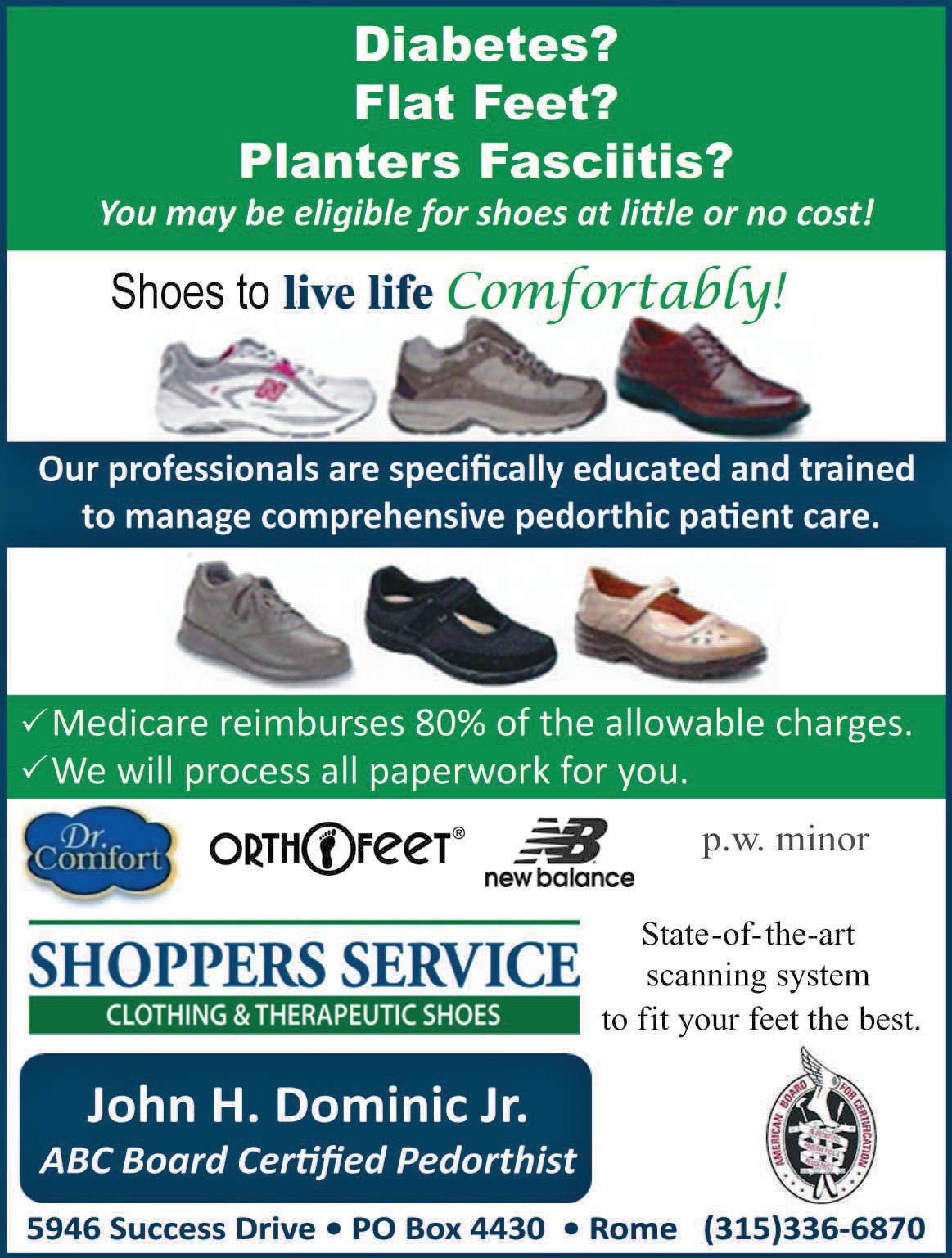

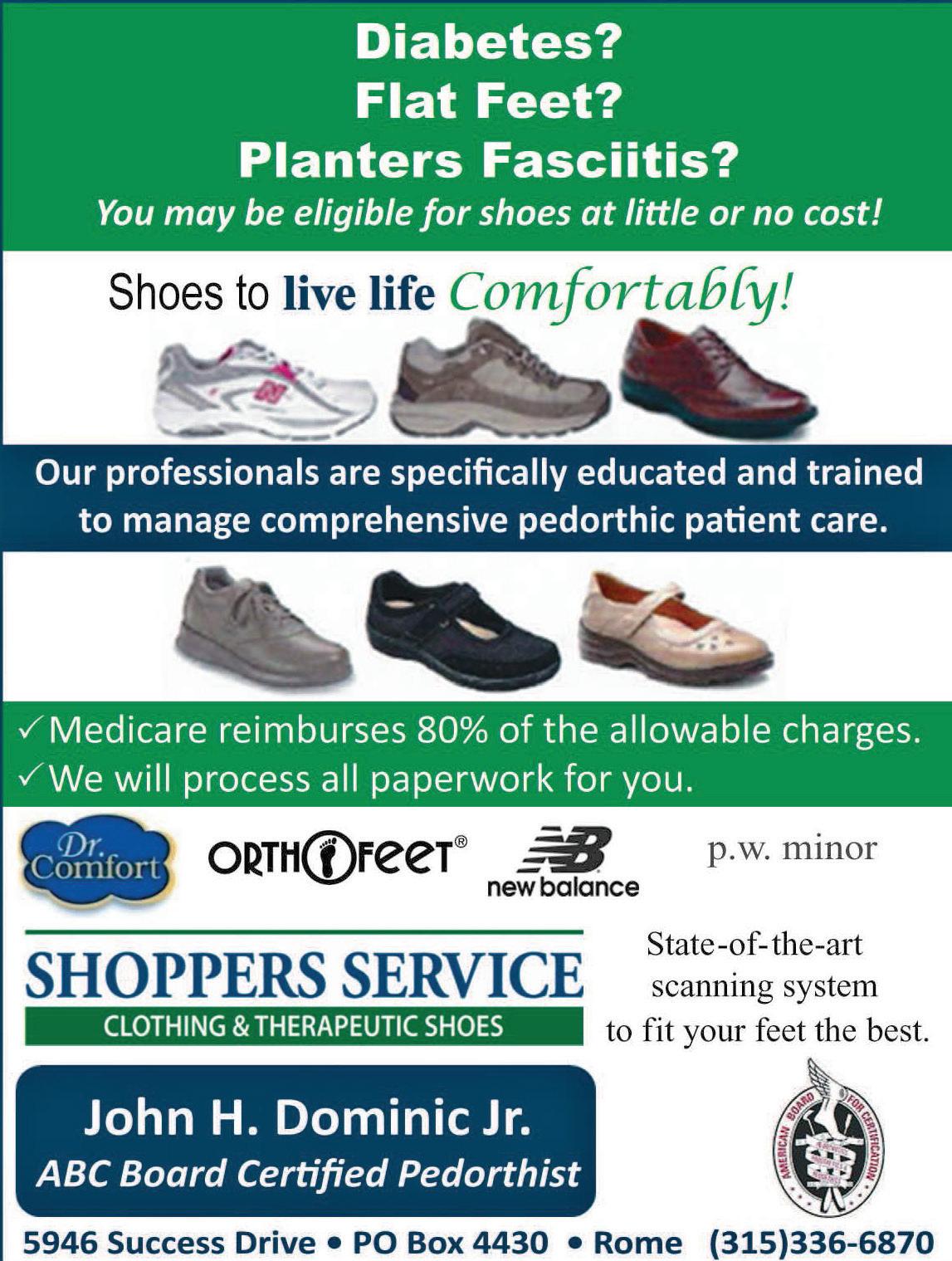
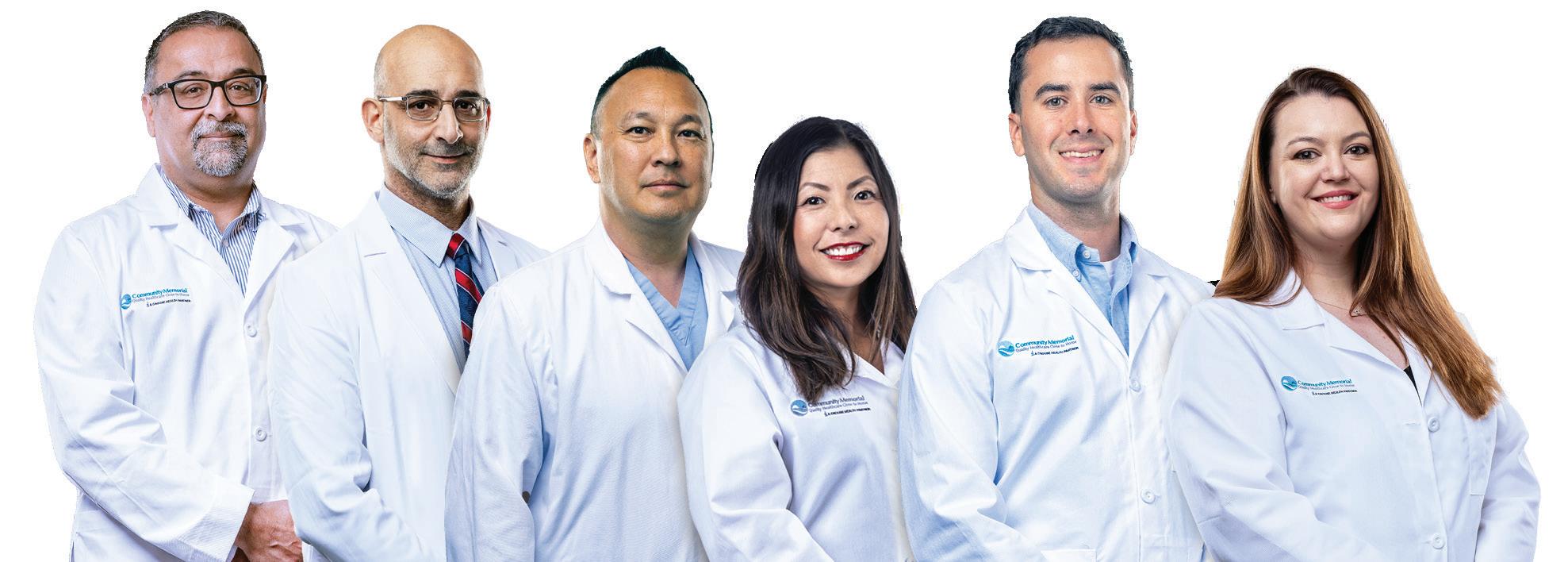
• Quit smoking: If you smoke, quit. Smoking damages the kidneys and doubles the rate of progression to end-stage renal failure. If you require a change,

Send your senior questions to: Savvy Senior, P.O. Box 5443, Norman, OK 73070, or visit SavvySenior. org. Jim Miller is a contributor to the NBC Today show and author of “The Savvy Senior” book.
By Eva Briggs, MD
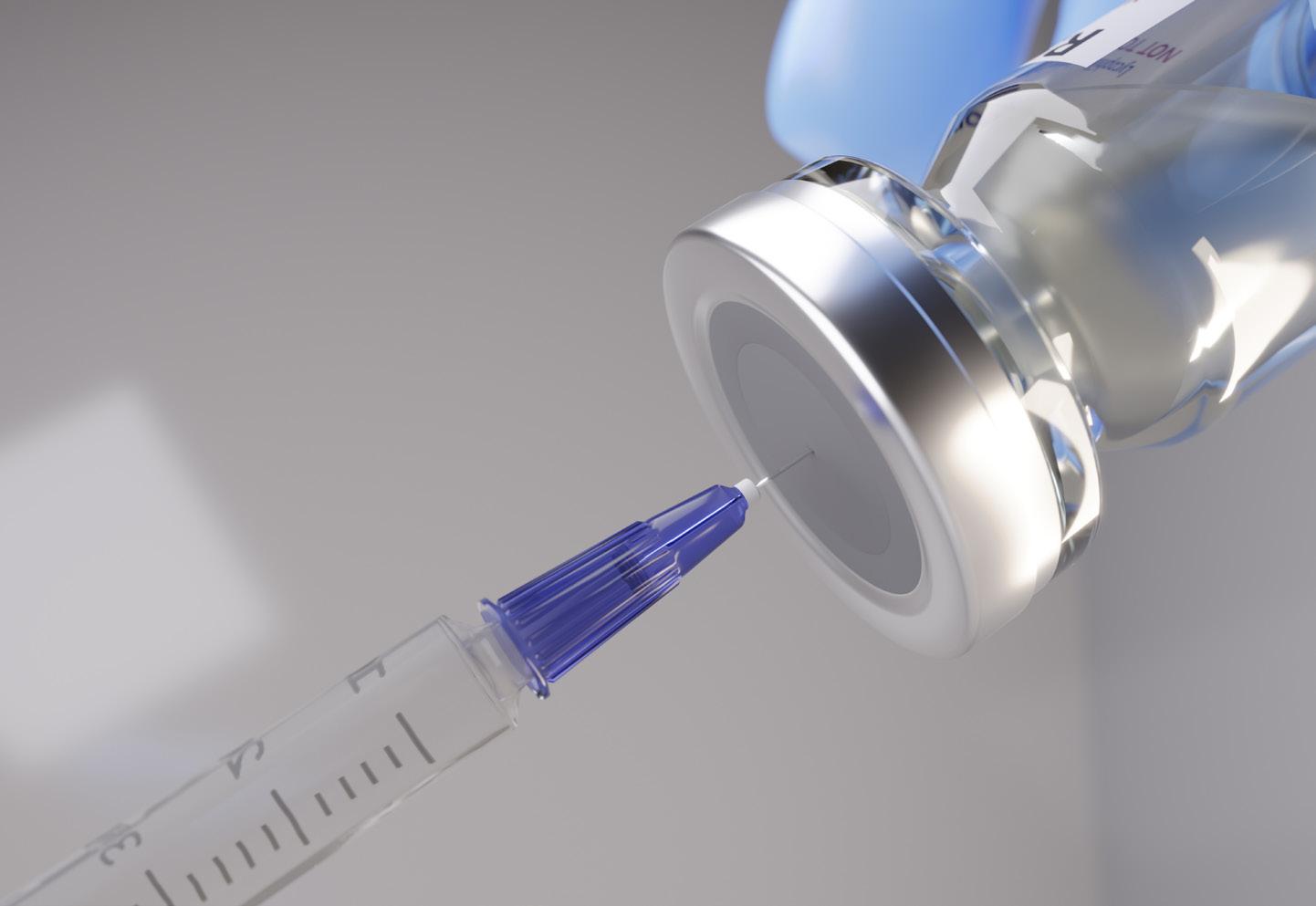
As I am writing this article, the availability of many vaccines might be in jeopardy in this country.
In fact, at the current moment the vaccine information sheets (VIS) have disappeared — then reappeared — from the Centers for Disease Control’s (CDC) website.
VIS provide written information about each vaccine and by law must be provided to every patient or their parent-guardian, whenever a vaccine is given.
I’m old enough to have seen some diseases that are now far less common because of vaccination. I want to share some of my personal experiences to help foster an understanding of why vaccines are important.
First, chickenpox which is also called varicella.
Part of my family practice training in residency included a rotation in the neonatal intensive care unit (NICU). If a mother has had chickenpox, she will pass antibodies to her infant that protect the baby during the newborn period. That’s why the varicella vaccine is not given immediately after birth as those maternal antibodies would block the vaccine and prevent it from doing its job. This vaccine was licensed in the U.S. in 1995, so it was not available during my residency training in 1984-1987. One patient that I cared for was born to a mother who contracted chickenpox at the time her baby was born. The baby ended up covered from head to toe in the tiny blisters characteristic of the disease. She survived after a long hospitalization in the NICU. I don’t know whether she suffered scarring or other long-term aftereffects.
One of my fellow residents contracted chickenpox during his training. He didn’t wind up hospitalized, but he too was covered in blisters and missed about two weeks of work. When I was a teenager, I used to babysit. One of the kids I babysat for developed a serious bacterial infection of his chickenpox lesions and required hospitalization.
Then there is measles. This virus is one of the most contagious diseases. A measles patient can breathe virus particles into the air which can linger for hours after the patient leaves the room. My husband’s best childhood friend developed subacute sclerosing panencephalitis as a teen-
ager. This disease is due to reactivation of dormant measles virus from an earlier typical case of measles. The measles virus slowly destroys the brain. Essentially his friend Doug developed dementia as a teenager. Over several years it robbed his cognitive abilities, his speech, his motor functions, even the ability to swallow, until Doug died as a young adult.
It was incredibly stressful for his family, and his mother who was probably only in her 40s died shortly after of sudden cardiac arrest.
Another one of my husband’s friends, his college freshman roommate, contacted measles as an adult. In adults, measles can attack the testicles (or ovaries in women). This made him so sick and miserable that he wound up hospitalized, missing weeks of school and ultimately dropping out of college.
As an interesting historical note, at that time Crouse Hospital in Syracuse still had a leftover sign on the building from the Hospital of the Good Shepherd which they had previously taken over. I remember seeing this sign when we walked over to visit our friend in the hospital.
I also remember Hemophilus influenza type B (H. flu).
Before there was a vaccine, every parent whose small child used daycare (and plenty of others) feared this bacterial scourge capable of causing meningitis which could kill or disable a child. One of my oldest child’s daycare classmates contracted H. flu at age 2 and was rendered permanently hearing impaired.
As a resident, it seems like every week I cared for at least one child seriously ill due to H. flu. The improved vaccine for this illness was licensed in 1987.
Whatever your political leanings, I feel strongly that it is important to preserve the availability of affordable vaccines for all.
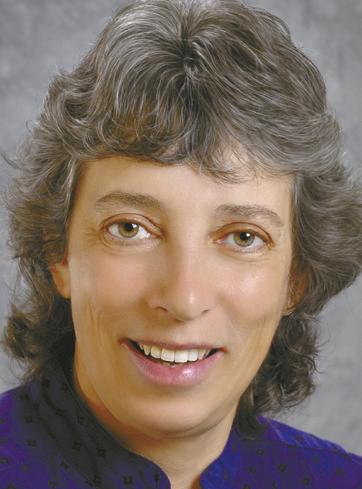
She lives in Marcellus.
You may be able to get Supplemental Security Income (SSI) even if you already receive Social Security benefits.
About 2.5 million adults and children get SSI and Social Security at the same time.
We pay Social Security benefits to workers and their eligible family members based on the worker’s earnings. SSI is a needs-based program that provides payments to people with little or no income and few resources.
People younger than 65 must be blind or have a disability and meet SSI income and resource limits, while people 65 and older do not have to have a disability. About 1.4 million people 65 and older receive both SSI and Social Security.
What do we mean by “little or no income”?
In 2025, you may be eligible for SSI if your total income — including your Social Security benefit — is less than $987 per month (the 2025 SSI monthly federal benefit rate plus $20).
We consider income from all nonwork sources, including pensions,
Q.: What is the estimated average Social Security payment that a person receives each month?
A.: The estimated average monthly Social Security benefit for a retired worker in 2025 is $1,976.00. The average monthly Social Security benefit for a worker with a disability in 2025 is $1,580.00.
Q.: Why should I sign up for a personal My Social Security online account?
A. My Social Security is a personal online account you can securely use to check your Social Security information and do business with us. With a personal my Social Security account you can:
• Keep track of your earnings and verify them every year.
• Get an estimate of your future benefits if you are still working.
• Request a replacement Social Security card in most states.
• Get a letter with proof of your benefits if you currently receive them.
veterans’ benefits, unemployment and Social Security disability, retirement and survivor benefits. We also count some — but not all — earnings from work, including self-employment.
What do we mean by “few resources”?
Resources are things that you own that you could change to cash and use to support yourself. They include vehicles (if you own more than one) and money in bank accounts, stocks and bonds. We do not count your home and the land it’s on, as long as you live there. To be eligible for SSI, your resources cannot be worth more than:
– $2,000 for a single person.
– $3,000 for a married couple living together.
For more information visit our blog article, You May Be Eligible for SSI and Social "Security Benefits" at blog.ssa.gov/you-may-be-eligible-for-ssi-and-social-security-benefits.
Please share this information with others who may benefit – and post it on social media.
• Manage your benefits:
– Change your address or telephone number. (Social Security beneficiaries only)
– Start or change your direct deposit. (Social Security beneficiaries only)
– Get a replacement Medicare card.
– Get a replacement SSA-1099 or SSA-1042S for tax season.
To find all the services available and set up an account, go to www. ssa.gov/myaccount.
Q.: I plan to retire soon. When are Social Security benefits paid?
Social Security benefits are paid each month. Generally, new retirees receive their benefits on either the 2nd, 3rd, or 4th Wednesday of each month, depending on the day in the month the retiree was born. If you receive benefits as a spouse, your benefit payment date will be determined by your spouse’s birth date. Here’s a chart showing how your monthly payment date is determined:



Hybrid Nurse Aide Training Program ELEMENTAL MANAGEMEN OUP
Hybrid Nurse Aide Training Program ELEMENTAL MANAGEMENT GROUP










Hybrid Nurse Aide Training Program ELEMENTAL MANAGEMENT GROUP






Equip your facility with our unstoppable HYBRID CNA program, empower your team to deliver top-notch care with the strength of a champion.
Equip your facility with our unstoppable HYBRID CNA program, empower your team to deliver top-notch care with the strength of a champion.
Equip your facility with our unstoppable HYBRID CNA program, empower your team to deliver top-notch care with the strength of a champion.
Are you looking for an innovative way to attract CNA students? We have your answer
Are you looking for an innovative way to attract CNA students? We have your answer
Are you looking for an innovative way to attract CNA students? We have your answer
Are you looking to minimize and most importantly eliminate agency use? We have your solution
Are you looking to minimize and most importantly eliminate agency use? We have your solution
Are you looking to minimize and most importantly eliminate agency use? We have your solution
Are you looking to improve morale by increasing your direct care PPD? Reach out to us to hear more
Are you looking to improve morale by increasing your direct care PPD? Reach out to us to hear more
Are you looking to improve morale by increasing your direct care PPD? Reach out to us to hear more
Are you looking to captivate and motivate the newer generation by offering unique and rewarding training opportunities? Look no further contact us today
Are you looking to captivate and motivate the newer generation by offering unique and rewarding training opportunities? Look no further contact us today
Are you looking to captivate and motivate the newer generation by offering unique and rewarding training opportunities? Look no further contact us today


CONTACT:
CONTACT:
Peg Reith BSN, RN
Peg Reith BSN, RN
Phone: 315-529-3267
Phone: 315-529-3267
CONTACT:
Email: CNA_Training@elementalmgt.com
Email: CNA_Training@elementalmgt.com
Peg Reith BSN, RN
Phone: 315-529-3267
Email: CNA_Training@elementalmgt.com












